-
Gizdich Ranch in Watsonville, California
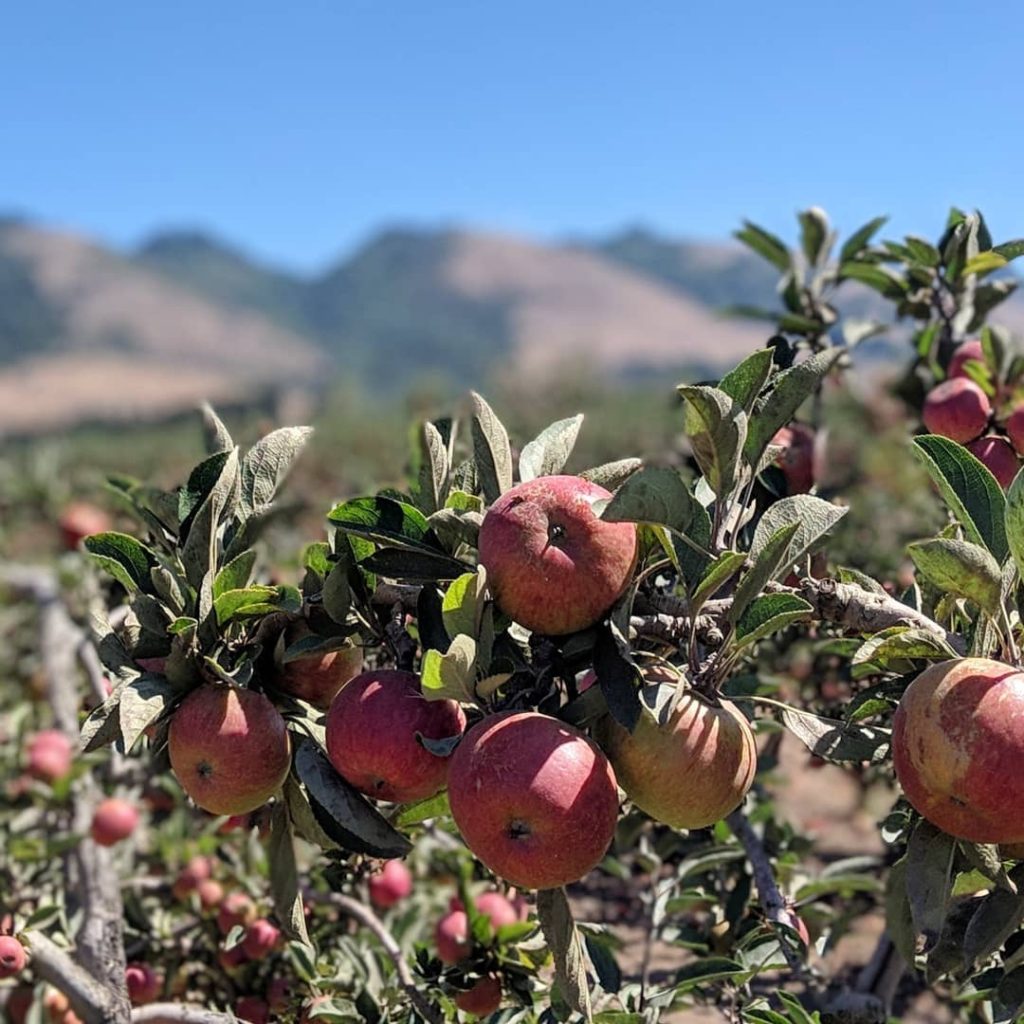 With autumn in the air, nothing is more fun than visiting the apple orchard. When I lived in the Midwest, I would giddily make my annual pilgrimage to the local apple orchard, bundled up in a warm sweater and hat. I would join others piling onto the hay wagons that would be pulled by a tractor out into the orchard. There, we were abandoned with bushel baskets to pick apples from trees in the crisp, cool autumn air. We returned later to the apple barn with our haul. At the apple barn, there was hot apple cider and fresh, warm cinnamon donuts. I have so many fond memories of this, I was feeling pretty bummed to be orchardless in California, that is, until my friend Lauryn told me about Gizdich Ranch.
With autumn in the air, nothing is more fun than visiting the apple orchard. When I lived in the Midwest, I would giddily make my annual pilgrimage to the local apple orchard, bundled up in a warm sweater and hat. I would join others piling onto the hay wagons that would be pulled by a tractor out into the orchard. There, we were abandoned with bushel baskets to pick apples from trees in the crisp, cool autumn air. We returned later to the apple barn with our haul. At the apple barn, there was hot apple cider and fresh, warm cinnamon donuts. I have so many fond memories of this, I was feeling pretty bummed to be orchardless in California, that is, until my friend Lauryn told me about Gizdich Ranch. 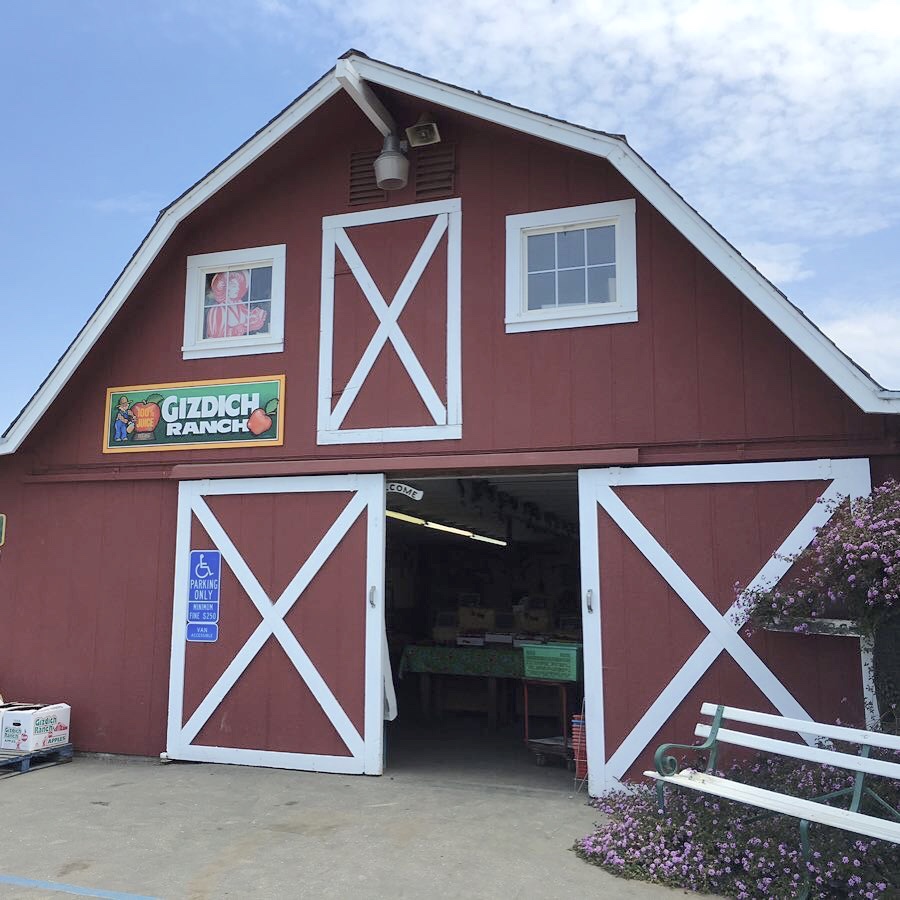
While you don’t need to bundle up at this apple orchard, and there are no hay wagons, hot donuts or cider, it is a true gem. Located in a quiet, rural area, the 60-acre Gizdich Ranch has a reputation for being a local favorite. It is located at 55 Peckham Road in Watsonville, CA, 31 miles north of Monterey and 94 miles south of San Francisco. They have been in business for more than 80 years. As you drive through the quiet countryside to Gizdich Ranch, you will notice quaint Victorian houses with gingerbread porches, old-fashioned windmills, and little red barns. It almost feels like you have traveled back in time to a place where people churn butter, make quilts and drive to church every Sunday in a horse and buggy. It’s just that cute.
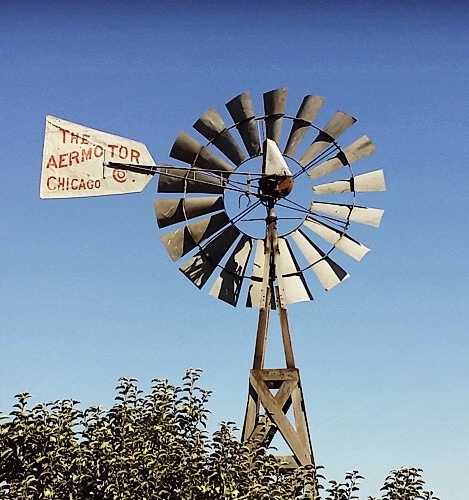
No matter the season, Gizdich has something good in store. In the spring and summer you can pick strawberries, olallieberries, and boysenberries, and in the fall, apples (or you can purchase them already picked). Gizdich is especially famous for their freshly baked pies. You can buy pie by the slice or an entire pie. You can even get a scoop of ice cream with your pie. Or, you may prefer a homemade apple dumpling drowning in a to-die-for caramel sauce. They also carry homemade jams, fresh pressed apple juice and other yummies, doodads, and gimcrackery. The apple juice is often sold out for good reason, it is delicious! If you are wondering about what to serve for dessert at Thanksgiving, you can pre-order pies here. Gizdich sells around 6,000 pies this time of year!
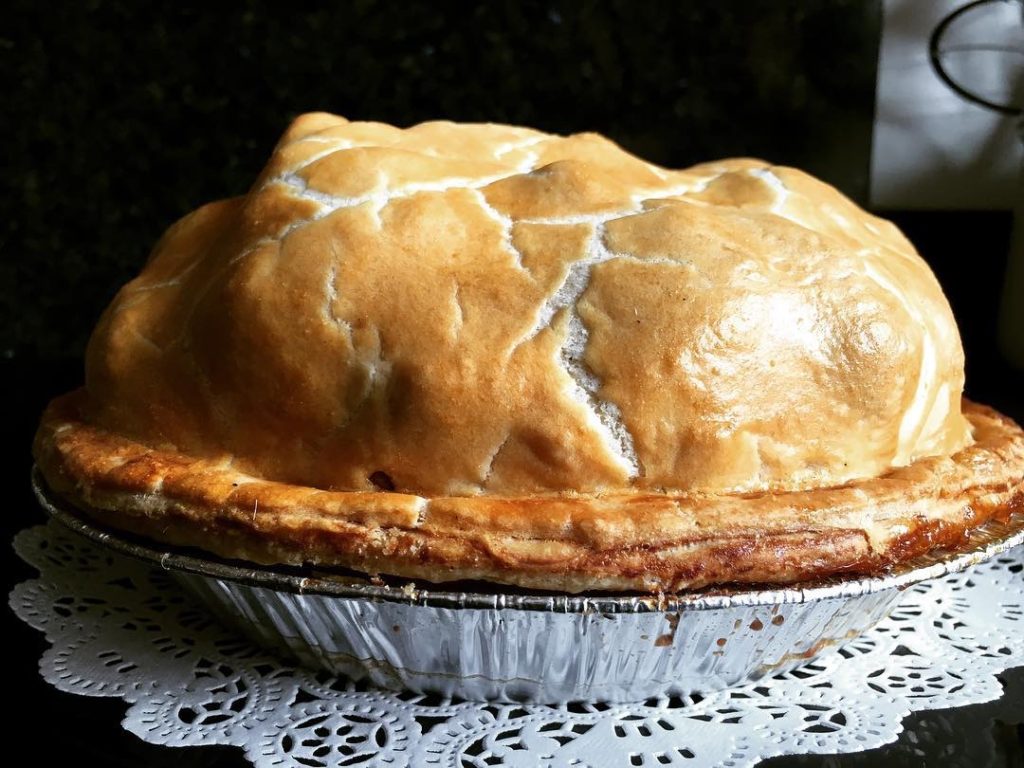
While the produce at Gizdich is not certified organic, they use many techniques, including applying beneficial insects and organic sprays, to avoid the use of pesticides. I snagged some heirloom Pippins (grown by George Washington on his estate in Virginia) and they were super crisp, sweet and tasty. Pippins are just one of 17 apple varieties available at Gizdich.
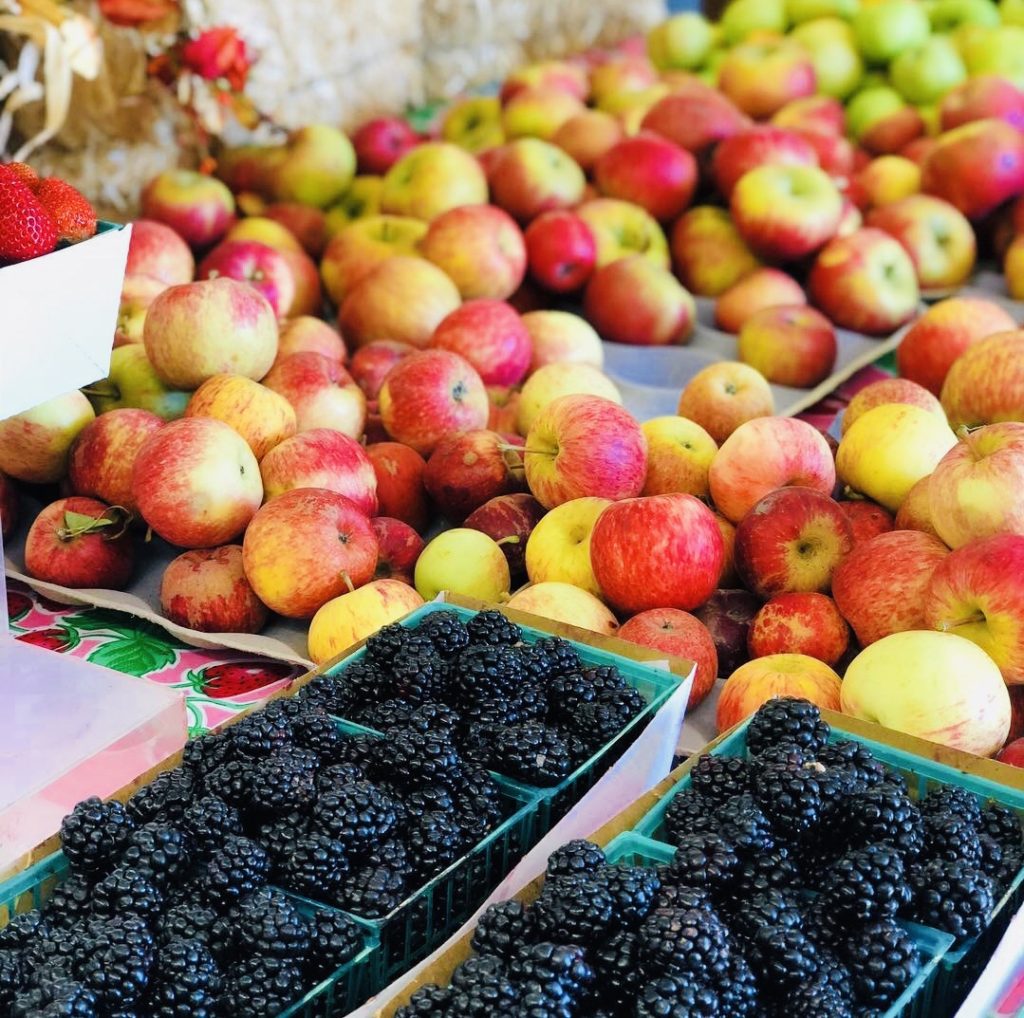
One of the most popular flavors for jam and pie is ollalieberry. If you are from the midwest, like me, you have probably never heard of ollalieberry. Olallies are a cross between blackberries and red raspberries and let me tell you, they are heavenly!
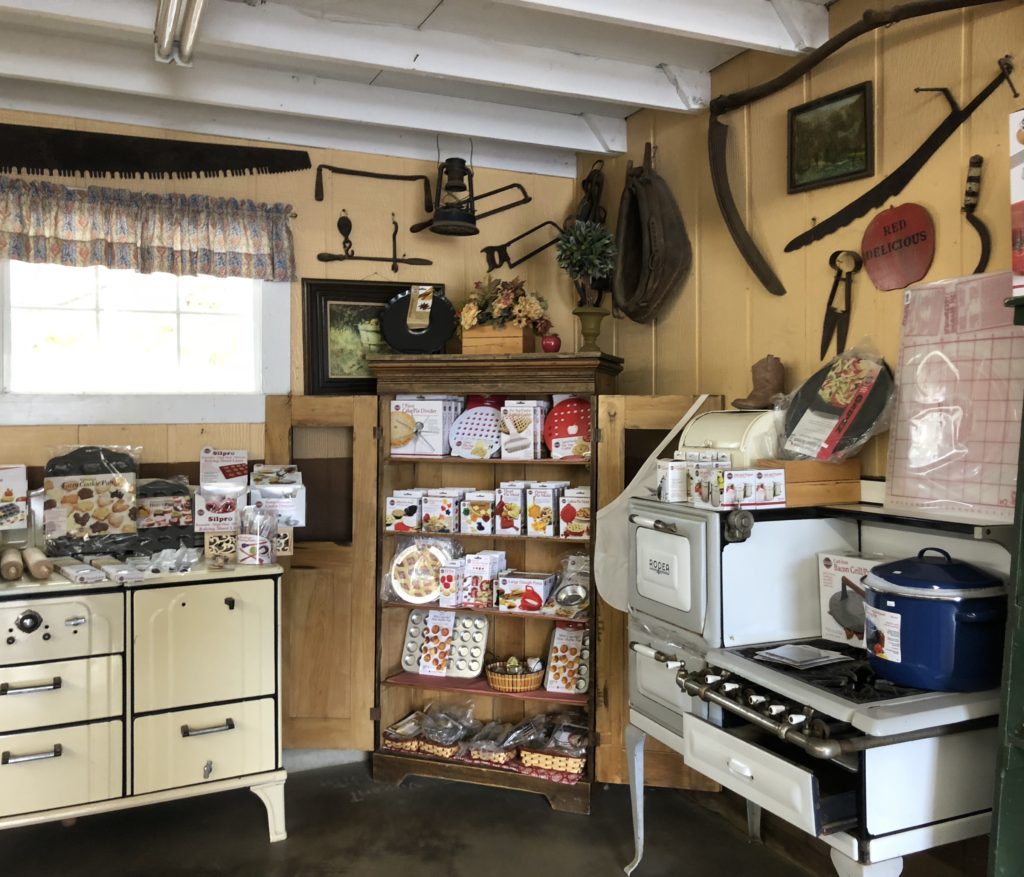
If you are hankering for something more substantial to eat, Gizdich’s has a deli that serves picnic lunches including sandwiches, chips, cookies, an apple, and a drink. There are picnic tables and benches where you can sit down and enjoy your goodies. There is also an antique shop on the premises which was closed when we were there.
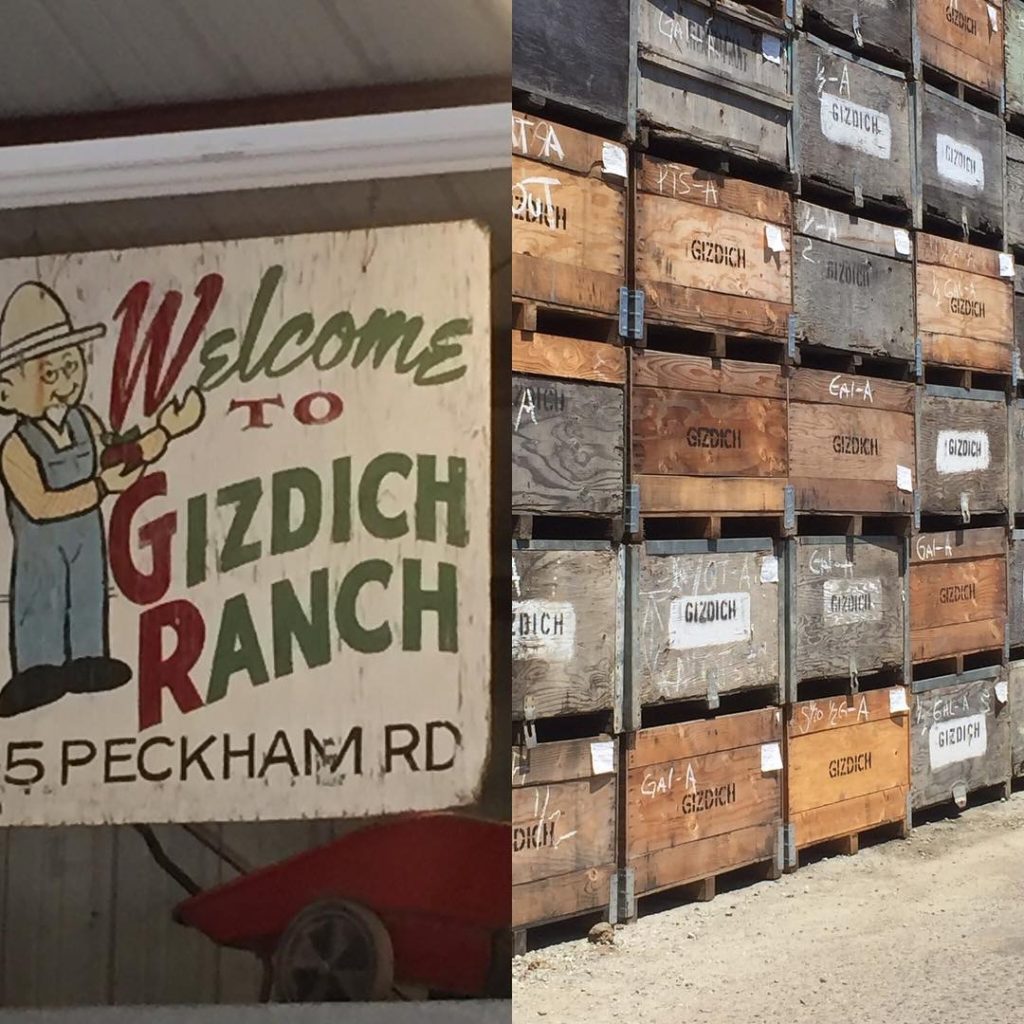
Hours: They are open every day from 9 am to 5 pm
Helpful Hints:
- Weekday mornings are the quietest, by afternoon the school buses are arriving and you will be standing in lines or dodging the kiddos
- If you are picking berries, bring your own take-home containers; Gizdich provides containers for picking only, there is a fee charged for boxes to take berries home in
- If you will be outside during hot and sunny weather, bring sunscreen and a hat
- It can be dusty here with dirt roads
- Credit cards are accepted as well as cash
- Signs can be a bit confusing, we ended up at the pick your own orchard and had to continue further around the corner to the actual farm and store.
- You can place phone orders before you arrive
- Ample parking is available
Contact: Call 831-722-2458 or visit their website Orchard
Thank you for visiting my blog! Wishing you peace, love, happiness, and a very lovely autumn!
-
Surfing Museum Lighthouse in Santa Cruz
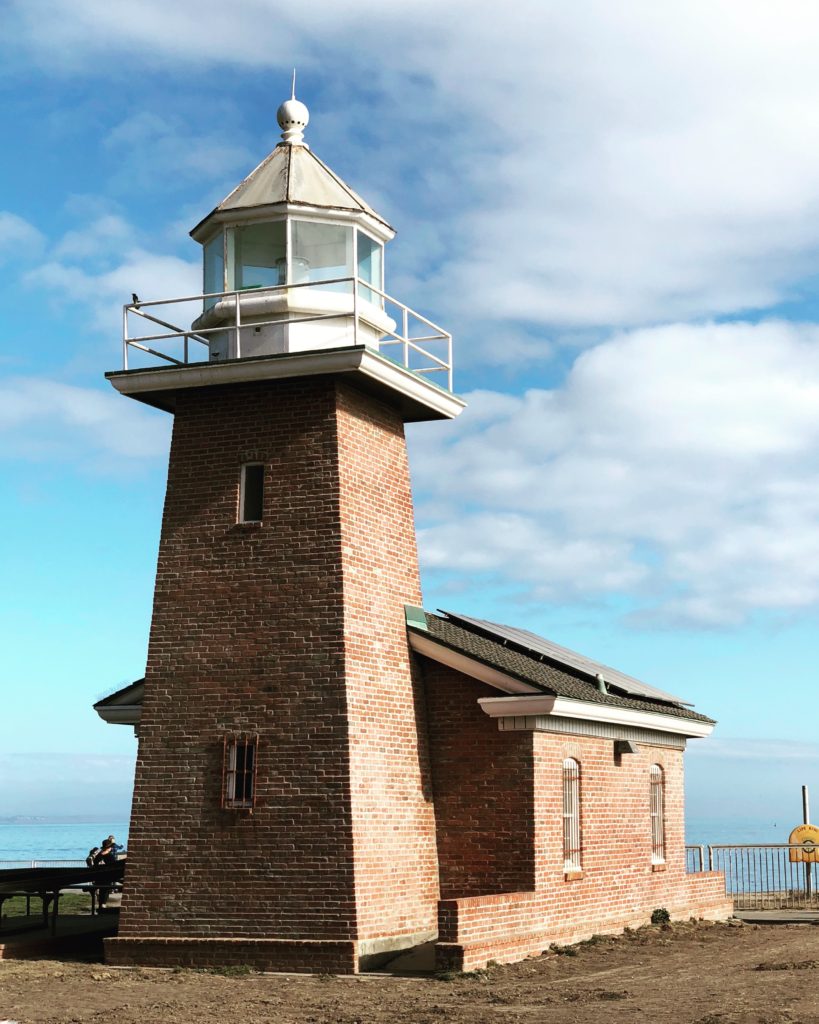 “Let’s go surfin’ now, everybody’s learning how, come on and safari with me” begins the popular Beach Boys song “Surfin’ Safari”. This could well be the theme song of the beautiful seaside city of Santa Cruz, California. Surfing is an obsession here. Legend has it that three Hawaiian princes first brought surfing to America while visiting Santa Cruz in the 1800s. This is the story of how a lighthouse built shortly after the civil war transformed into a shrine to surfing culture.
“Let’s go surfin’ now, everybody’s learning how, come on and safari with me” begins the popular Beach Boys song “Surfin’ Safari”. This could well be the theme song of the beautiful seaside city of Santa Cruz, California. Surfing is an obsession here. Legend has it that three Hawaiian princes first brought surfing to America while visiting Santa Cruz in the 1800s. This is the story of how a lighthouse built shortly after the civil war transformed into a shrine to surfing culture. 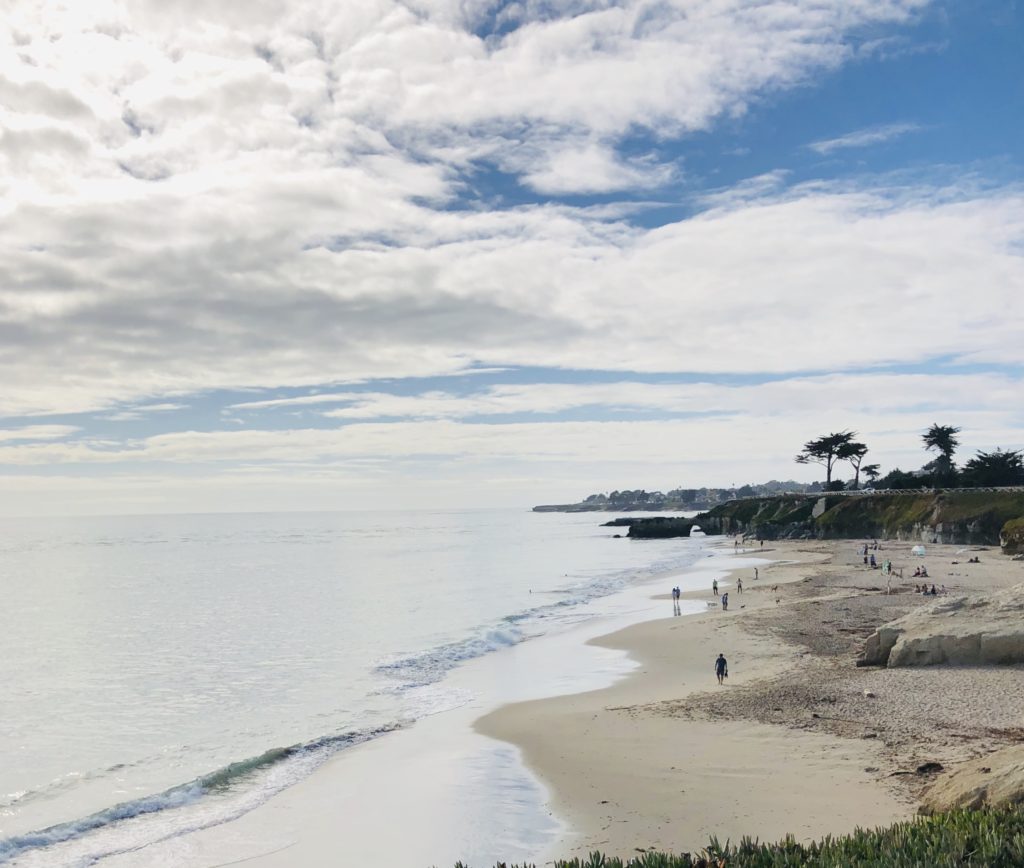
The beach north of the museum offers a serene view. Santa Cruz’s original lighthouse was completed in 1870, constructed at Point Santa Cruz and modeled after the Ediz Hook Lighthouse in Washington Territory. By 1878, the prolific formation of new sea caves along the cliffs at Point Santa Cruz began to jeopardize the lighthouse’s structural integrity, with the potential for collapse. It was removed from its foundation and moved on wooden rollers three hundred feet further inland, using a team of horses.
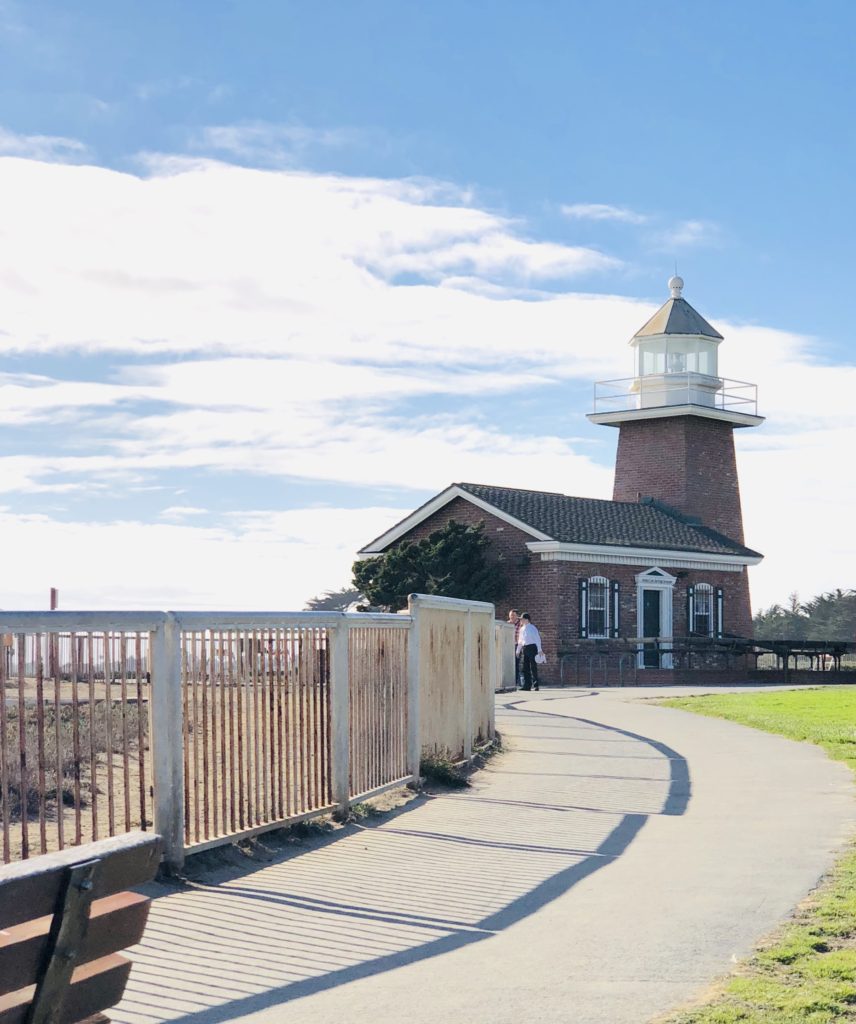
A handful of lighthouse keepers and their families lived at Point Santa Cruz. The most notable was Laura Hecox, the daughter of the first lighthouse keeper, Adna Hecox. When her father passed away, she became the official keeper, a job she held until her resignation in 1916. Laura began the study of shells and amassed an expansive and well-renowned collection of artifacts, some of which can be viewed today at the Santa Cruz Museum of Natural History.
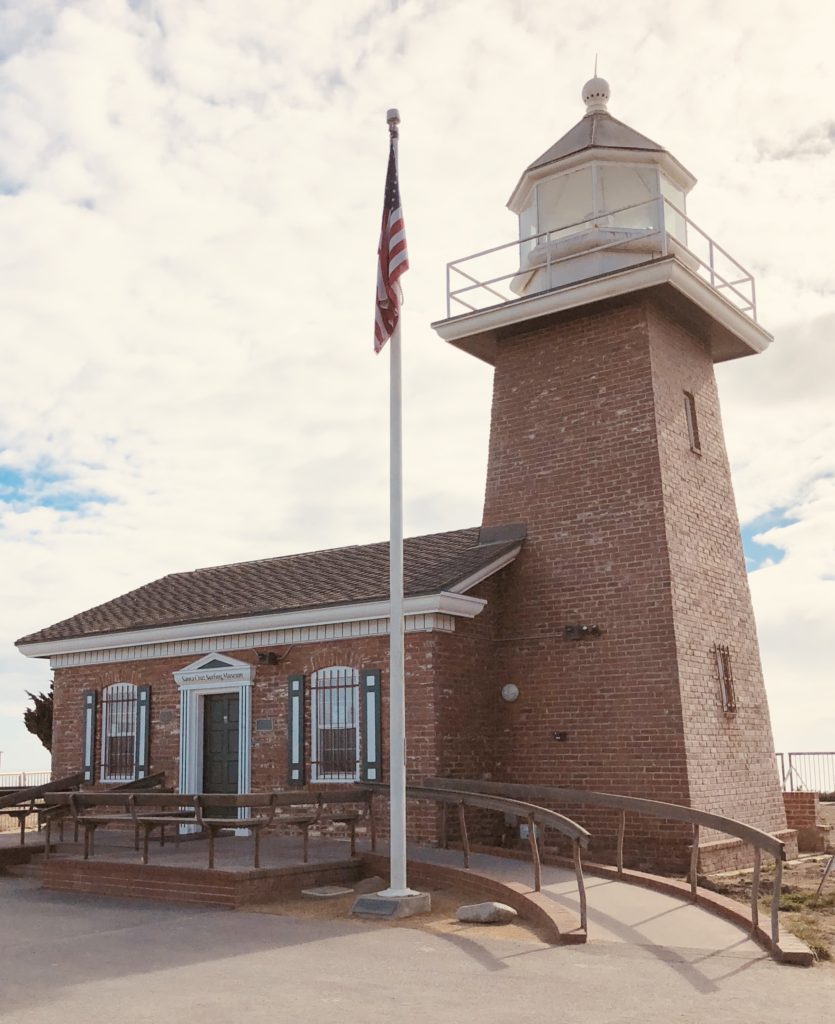
In 1941, the Coast Guard built a twenty-six-foot high tower 200 feet seaward of the lighthouse which became the station’s official beacon, and the original lighthouse and grounds were leased to the city of Santa Cruz for a park. In 1948, the Coast Guard sold the aging lighthouse with the stipulation that it be entirely removed from the property. A local carpenter purchased it and completely dismantled it for the lumber. The city of Santa Cruz later purchased the property at the site of the original lighthouse. The lighthouse that had stood here for over seventy years was gone forever. This could have been the end of the story, but a tragic accident brought about a very beneficial reinvention.
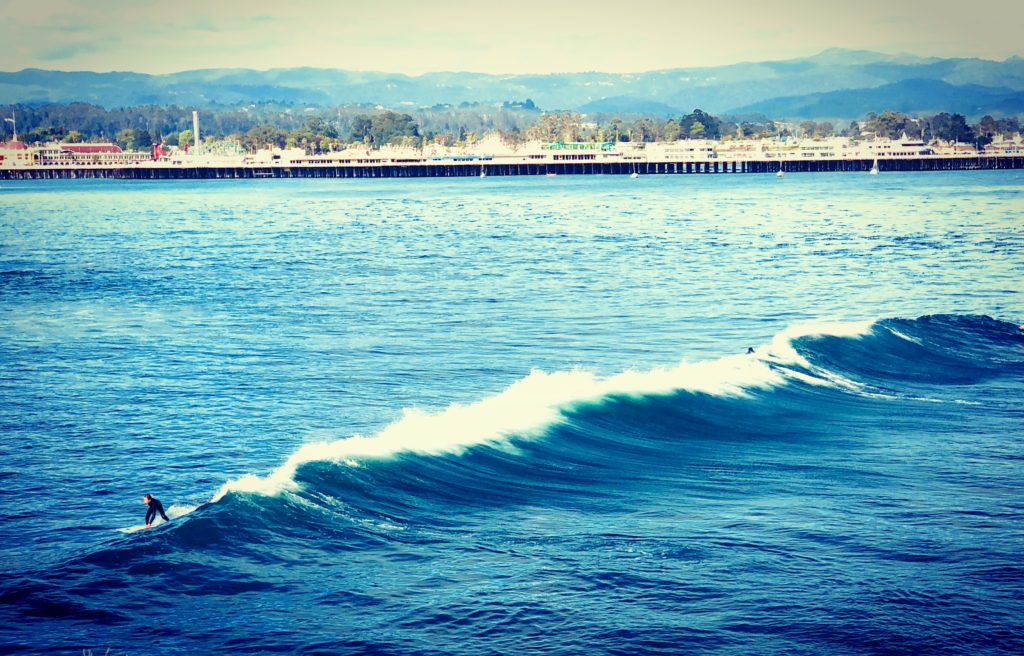
It’s fun to watch today’s surfers catching waves. In the background is Santa Cruz’s beach boardwalk. Surfing can be a perilous sport, and in 1965, a promising young 18-year-old surfer named Mark Abbott lost his life at nearby Pleasure Point surf break. In 1967, Mark’s grieving parents wanted to do something positive to commemorate their son. They donated life insurance money for the completion of a new 550 square foot new lighthouse in honor of their son. The Abbott Memorial Lighthouse was built of red brick and featured a lantern from the defunct Oakland Harbor Lighthouse. A beautiful plaque inside the lighthouse reads “This lighthouse is further dedicated to all our youth whose lives, through fate or misadventure, are terminated before realizing their true potential. May their spirits find new dimension in the unknown horizons that await us all.”
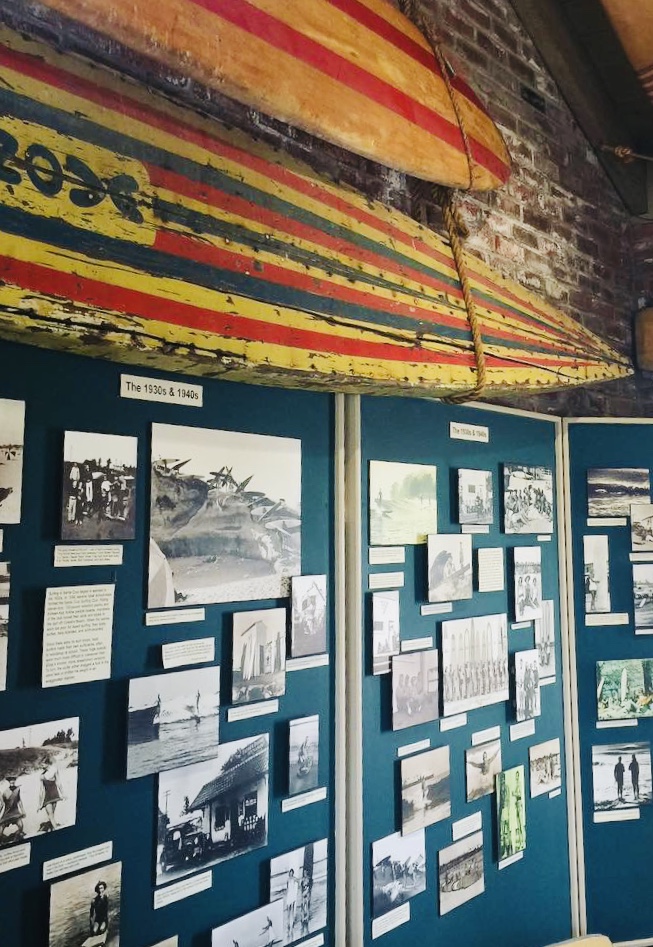
In 1986, the lighthouse became home to the Santa Cruz Surfing Museum, the first surfing museum in the world. In 2008, it was nearly closed due to city budget difficulties. The Santa Cruz Surfing Club Preservation Society raised enough money to keep the lighthouse open temporarily, and other donors soon came forward to rescue the museum.
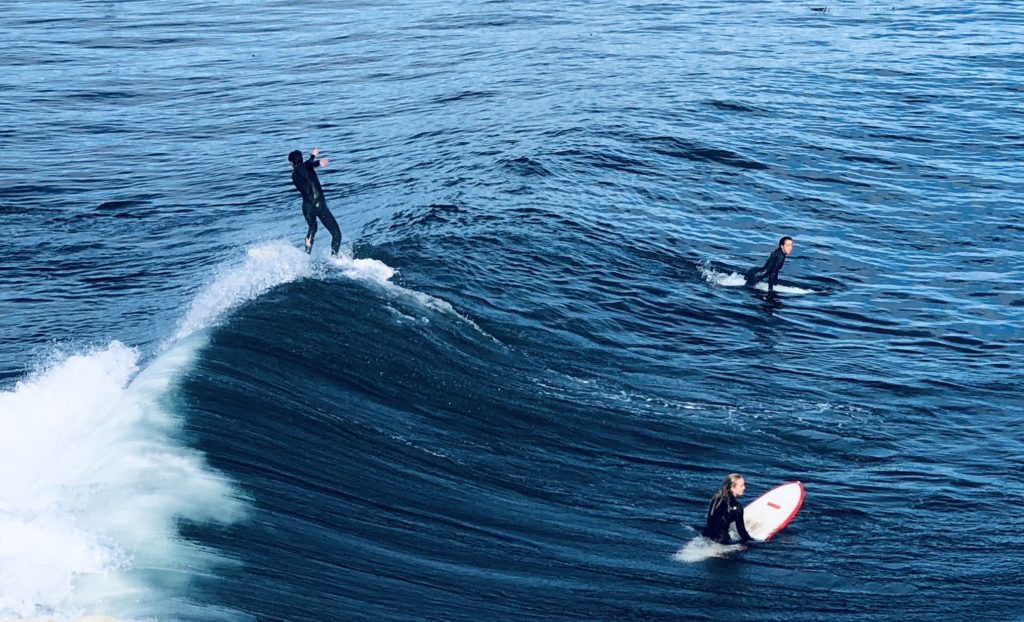
While I am not a surfer, I was truly impressed by the extensive collection of photographs, videos, surfboards, and other surfing memorabilia in the museum. Notable features include locally crafted redwood surfboards from the 1930s and the very first wetsuit invented by Santa Cruz native Jack O’Neill. You really feel the passion that this sport has elicited in people and the historic role (over 100 years) it has played in the area. Santa Cruz is highly respected in the surfing world. In 2011, Santa Cruz received approval as a World Surfing Reserve, ranking highly on criteria such as wave quality and consistency, surf culture and history, and its unique environmental characteristics. There are over 23 surf spots in the region, including the iconic Steamer Lane and Pleasure Point.
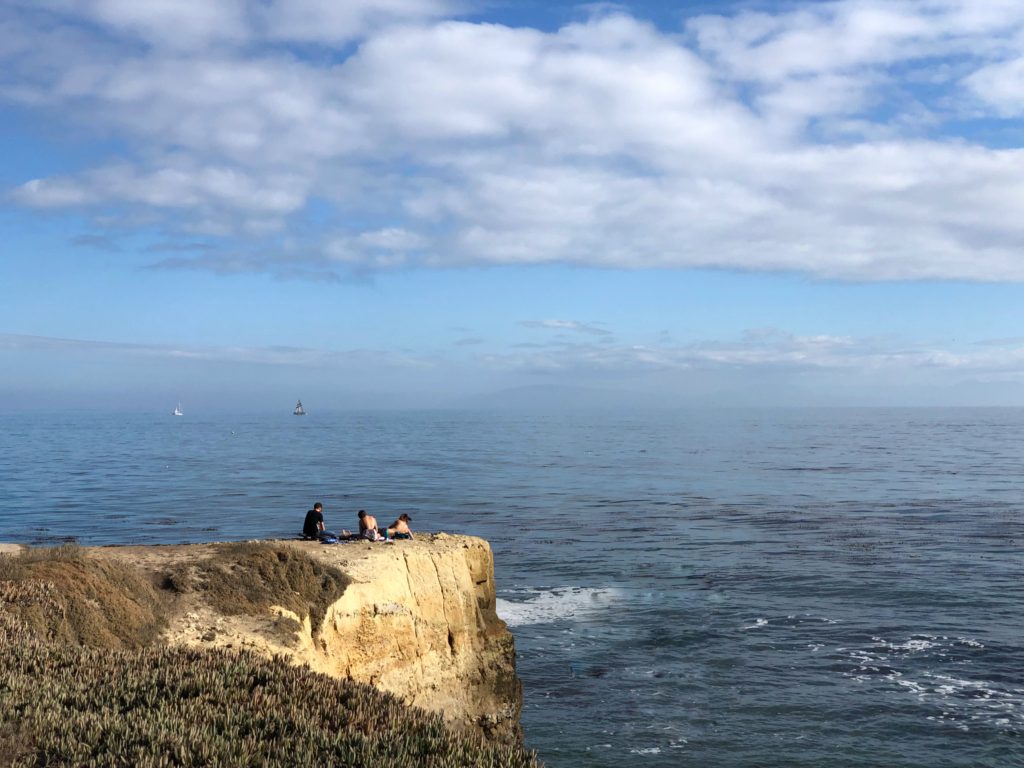
It is a beautiful place to relax and contemplate the sea and sun. The museum/lighthouse has been a staunchly revered local landmark and hosts the annual “Caroling Under the Stars” tradition each Christmas. Admission to the museum is free but donations are welcome. There are numerous benches around the area and it is wheelchair accessible. It is a beautiful and peaceful place to sit and watch the surfers, enjoy a picnic lunch, or just bask in the sunshine while enjoying the beautiful beach.
Location: 701 West Cliff Drive, Santa Cruz, CA 95060
Summer Hours (July 4 – Labor Day): 10:00 a.m. – 5:00 p.m. (closed Wednesdays)
After Labor Day Hours: Noon – 4:00 p.m. (closed Tuesdays and Wednesdays) and
Phone: 831 420-6289
Helpful Hints: No restrooms are on the premises, but public restrooms are available approximately one block south of the museum on the opposite side of the street.
More Information: Santa Cruz Lighthouse and Surfing Museum
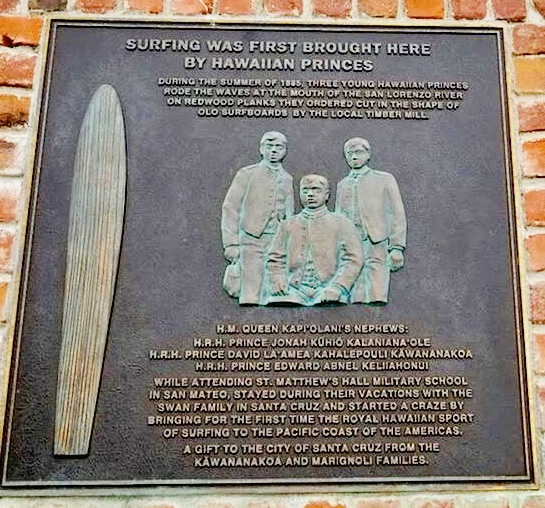
Plaque commemorating Hawaiian Princes who introduced surfing to Santa Cruz in 1885. Thank you for visiting my blog! Wishing you peace, love, happiness, and beautiful vistas!
-
Shake Your Tail Feathers at the Monterey County Fair
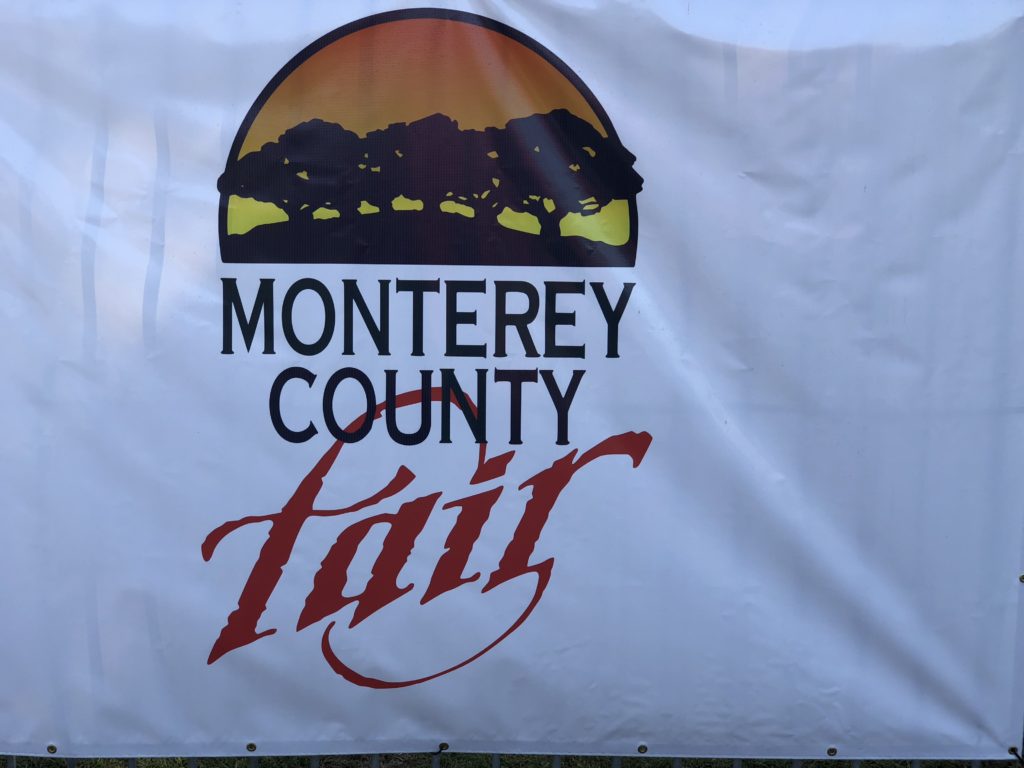
The 2018 Monterey County Fair’s Theme was “Shake Your Tail Feathers”, which of course, as a chicken mama, I loved. I am also inspired by seeing the dedication of all the young people in 4-H to their animals and to this event. It is clearly a great deal of hard work, and I respect all the effort they put forth.
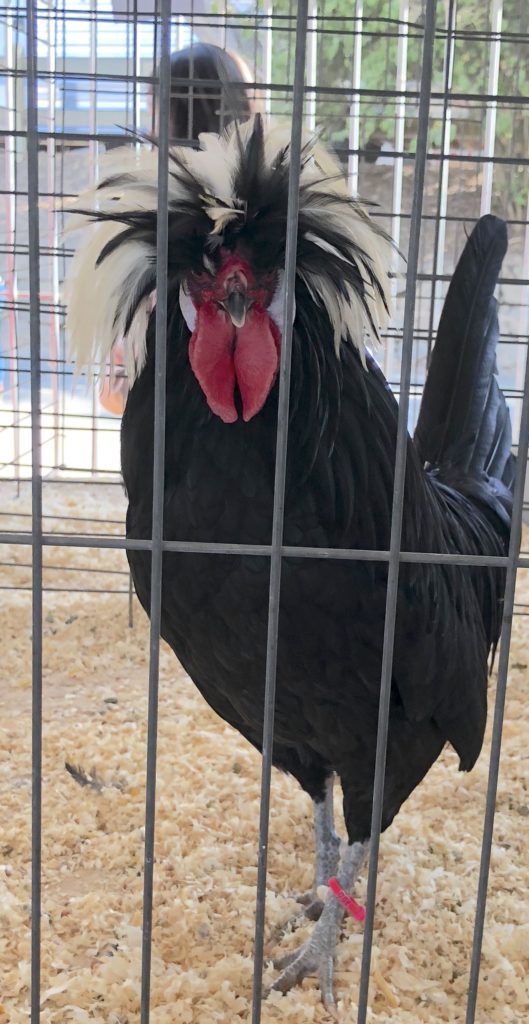
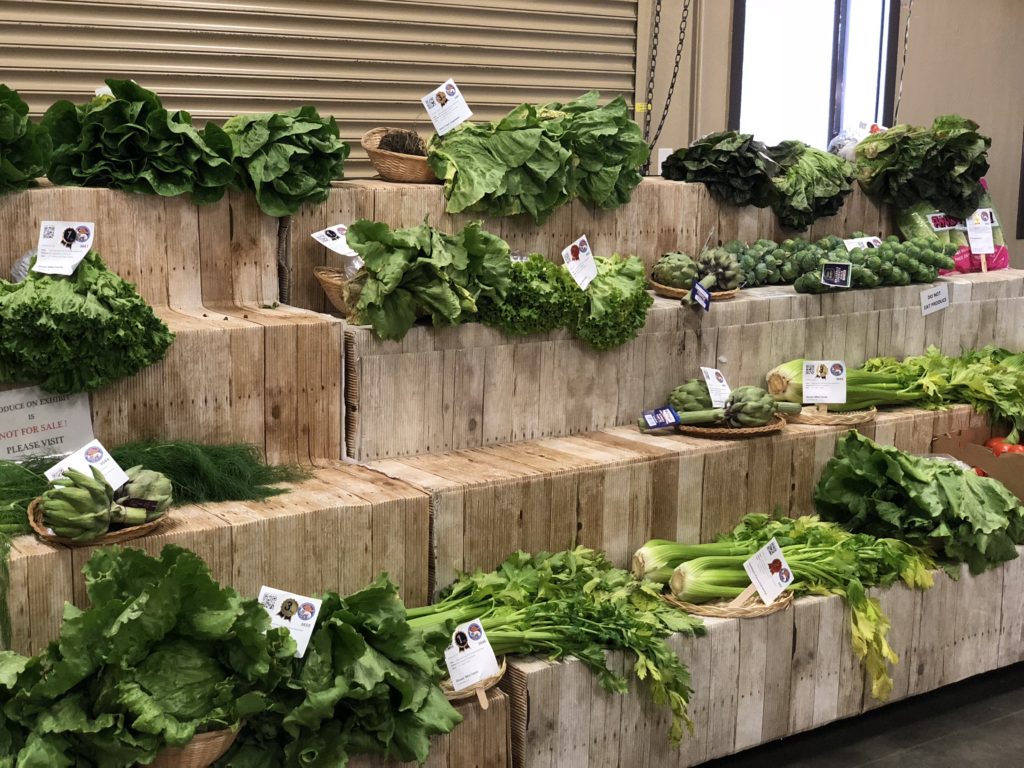
I went the very last day of the fair, which I found out later, was probably not a good idea. The last day, all children under 12 get free admission, which means, it is usually the busiest and most crowded day to go. Yet, for the most part, everyone was very peaceful and unruffled. It actually was moderately calm and low-key, considering the crowds and lines.
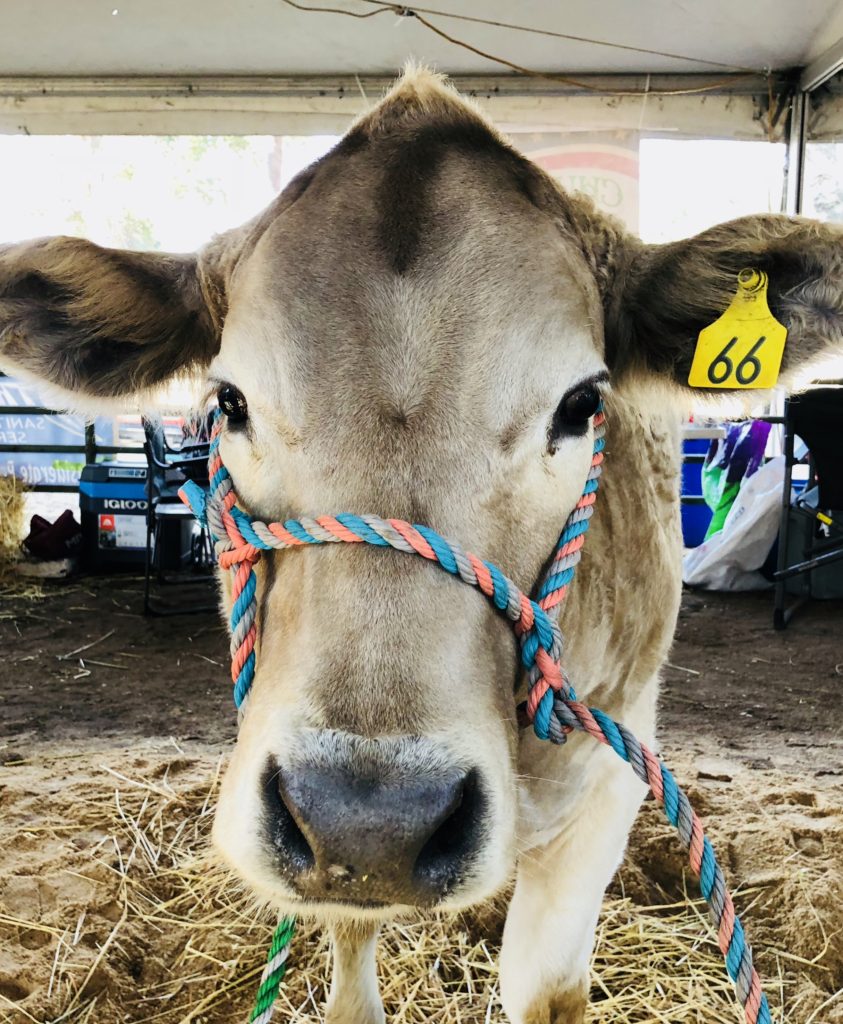
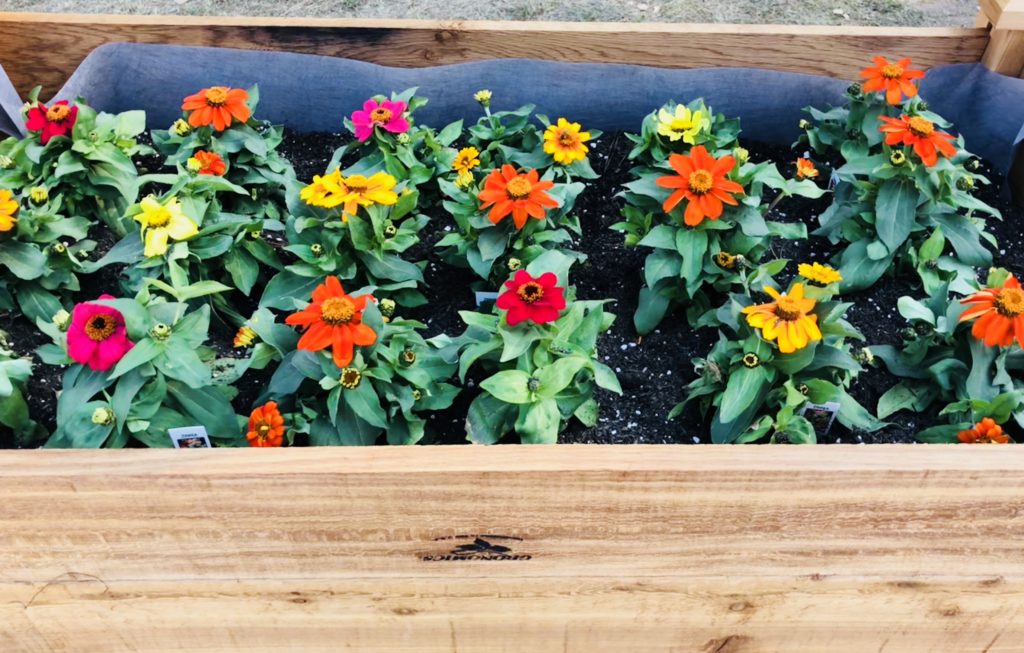

Rides, food, farm animals, musical talent, live entertainment, demonstrations, souvenirs, home-made foods and crafts, ribbons & prizes; the Monterey County Fair is a recipe for good old-fashioned fun for all ages!
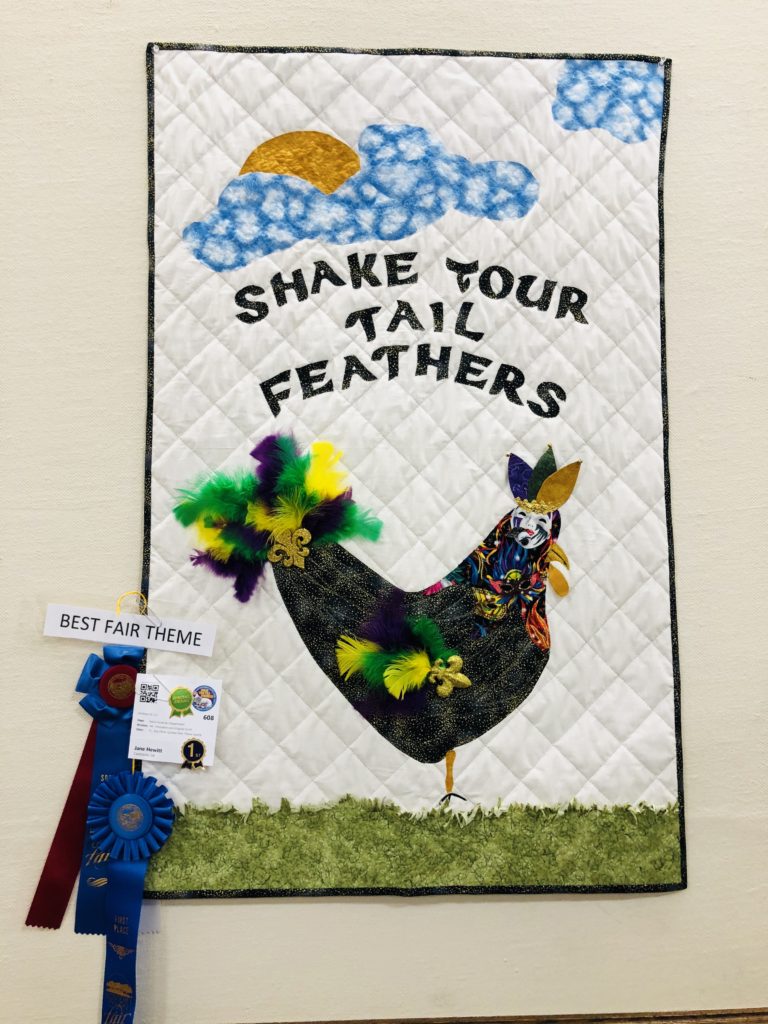
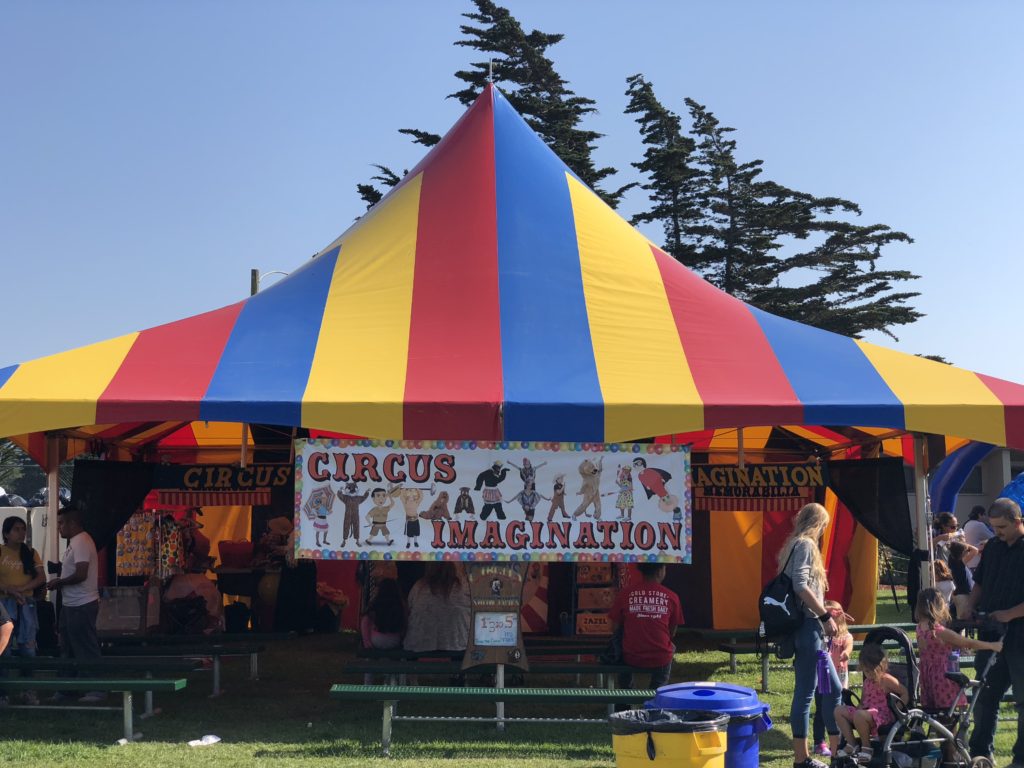
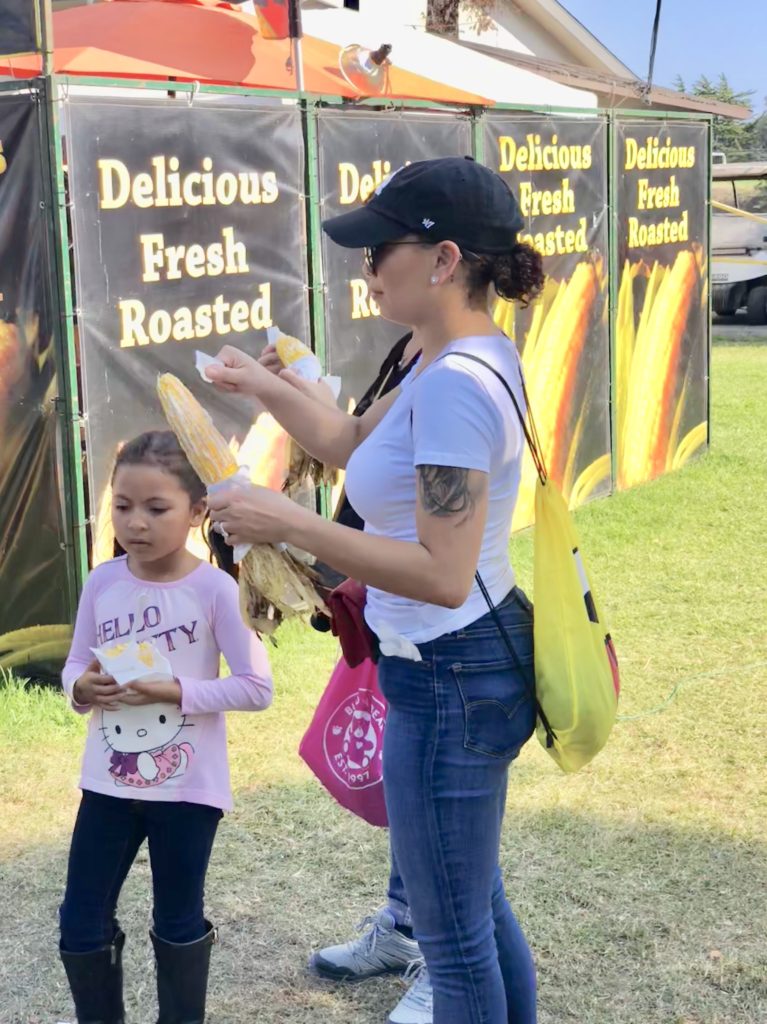
There were even wine tastings from local wineries. We are in wine country, right?
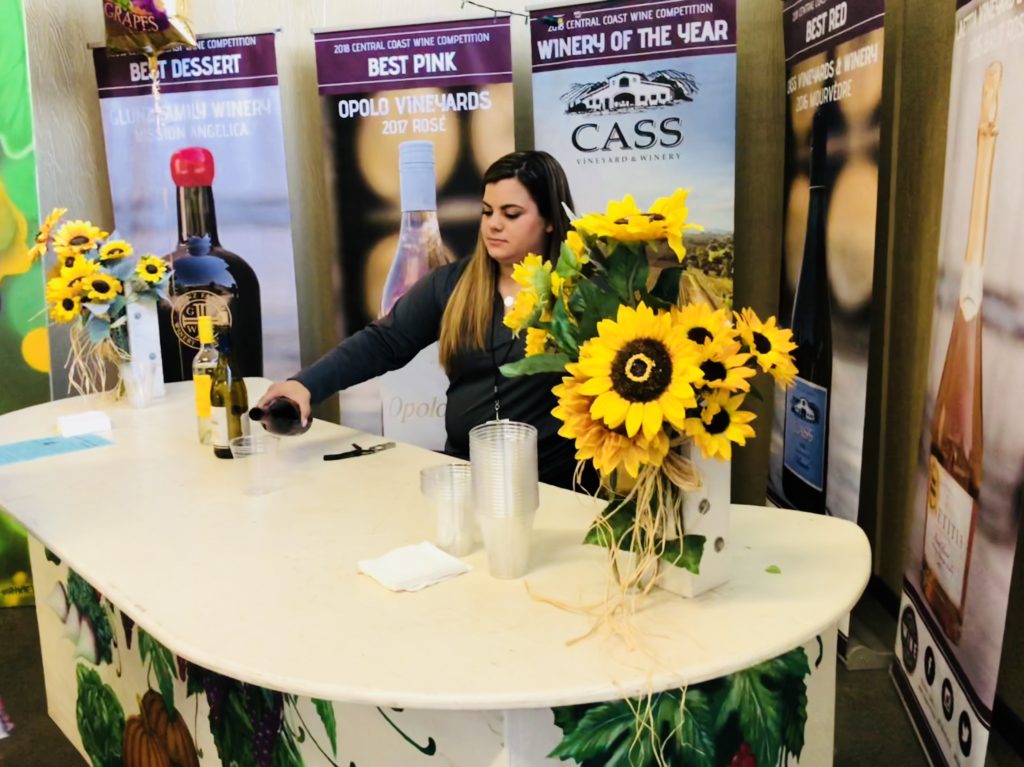
One of my favorite buildings is the Wool Building. I always love seeing the ladies with their spinning wheels, diligently operating their wheels while simultaneously chatting and providing information to visitors. If I ever retire, I want to learn how to operate a spinning wheel. Maybe I will also finish all my crochet and knitting projects too!
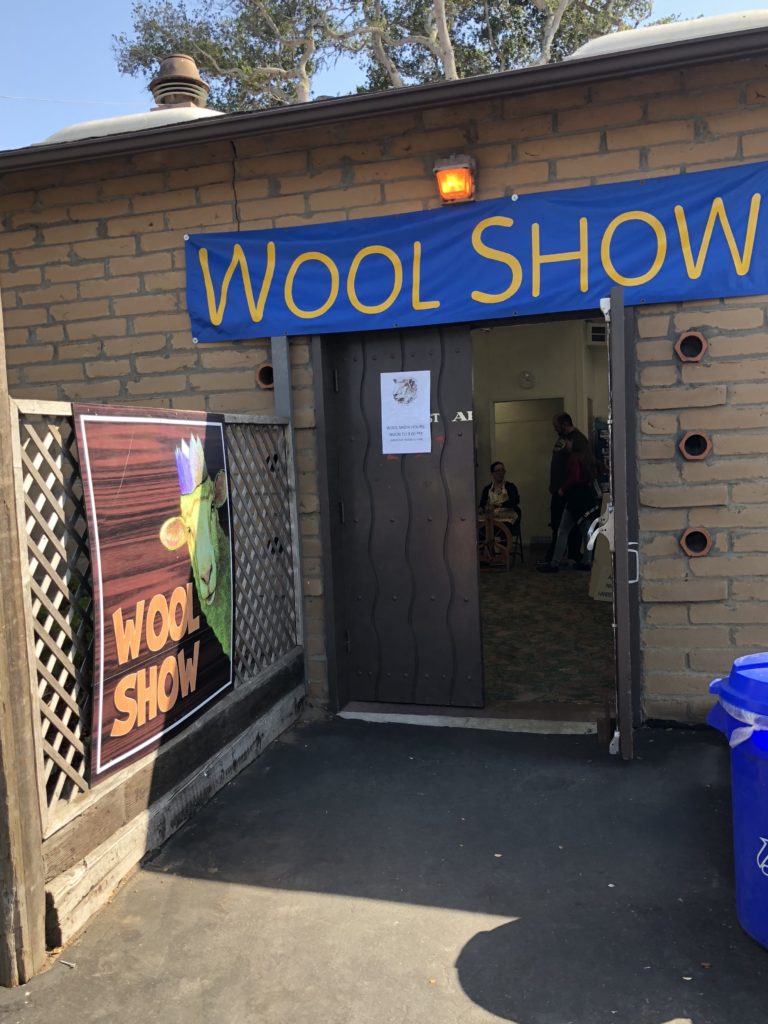
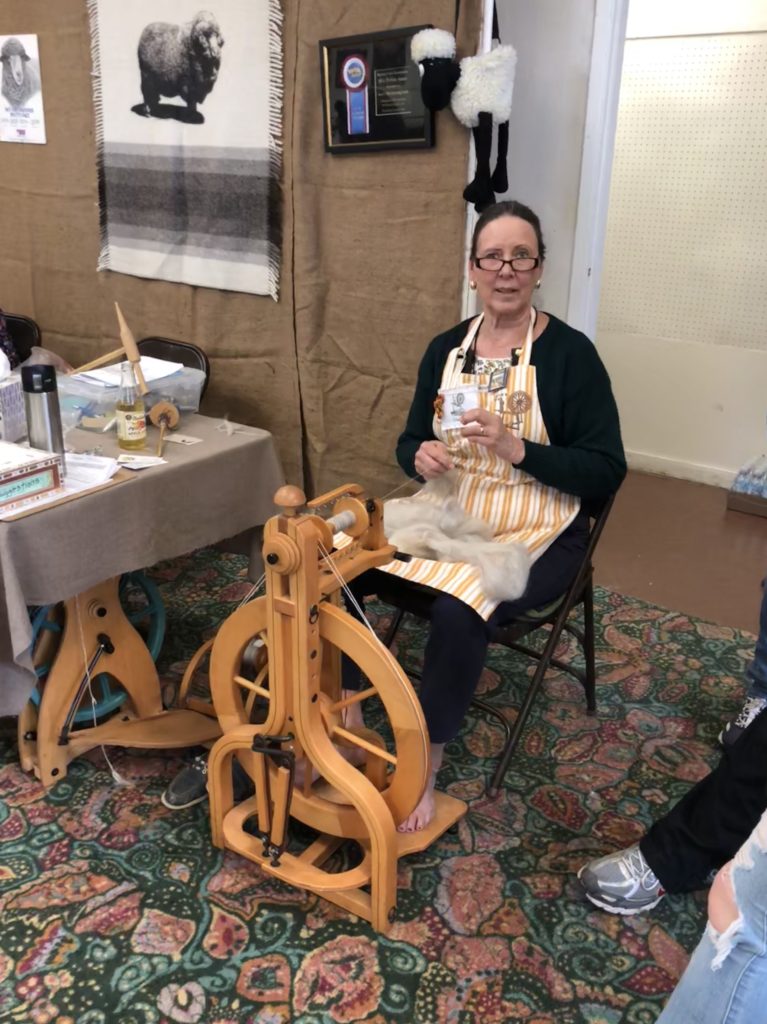
Of course, my very favorite part of the Monterey County Fair is the animals. I wanted to snuggle with all the cute farm animals, but alas, I had to follow the rules and stay outside of their pens. It was especially difficult with Mr. Pig (see photo below) as he was so ridiculously cute and had personality plus! There is just so much to see, smell, hear, taste, and touch. I would highly recommend the Monterey County Fair!
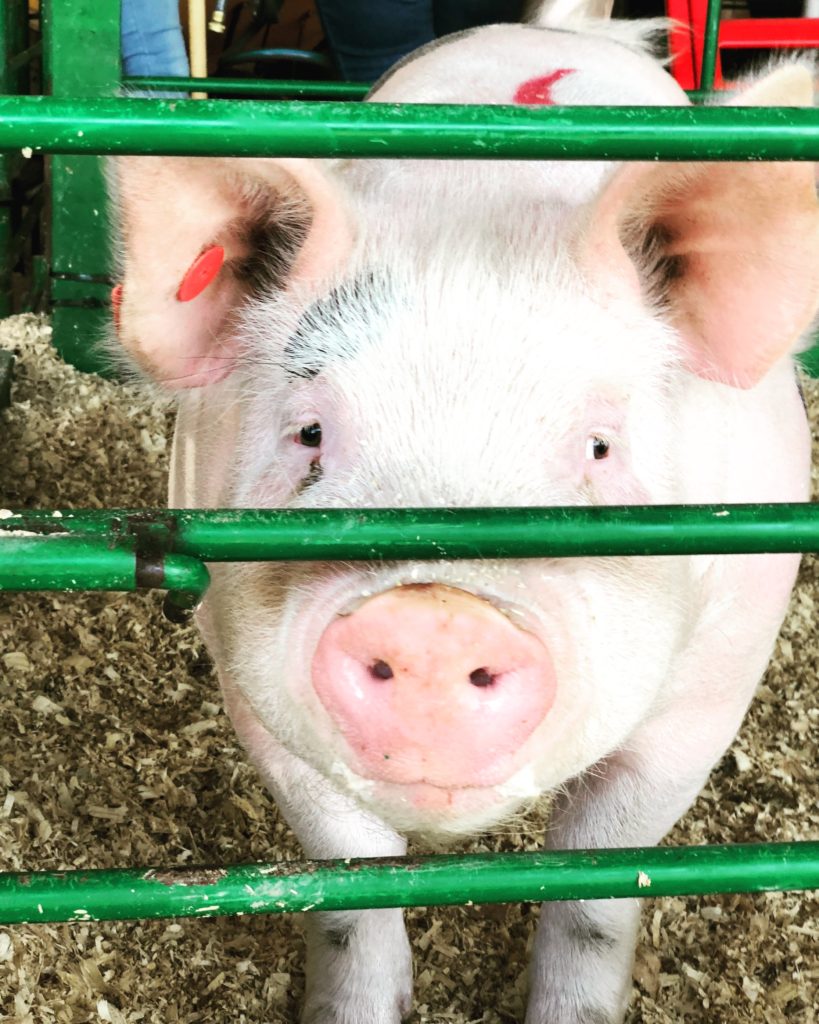
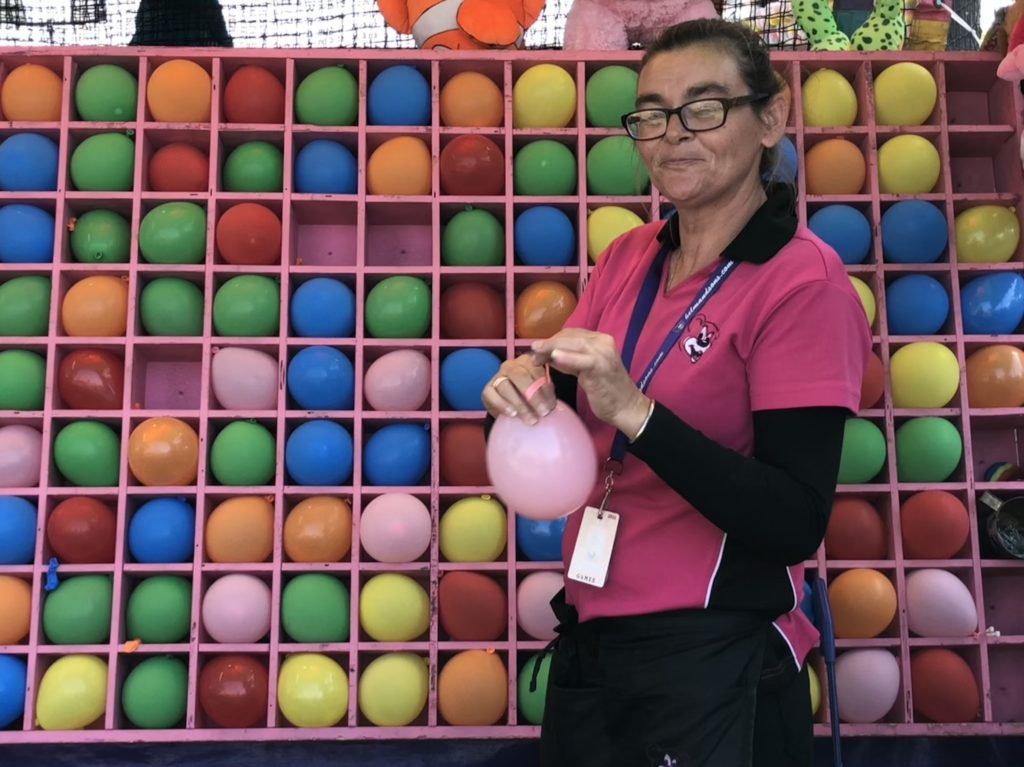
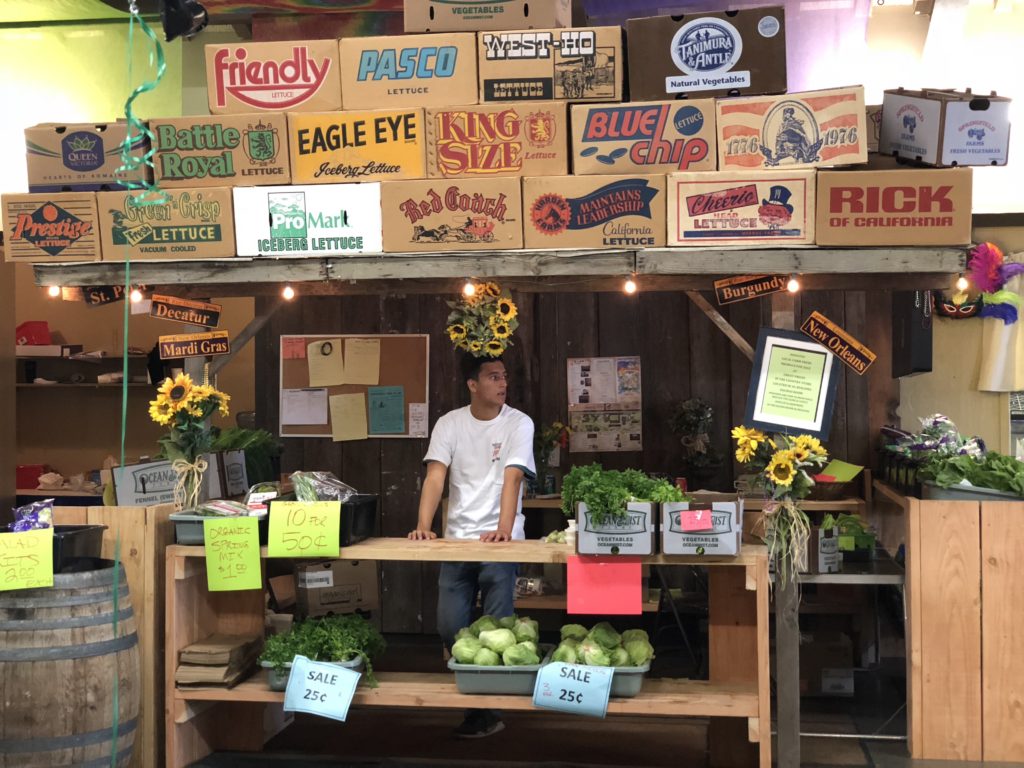
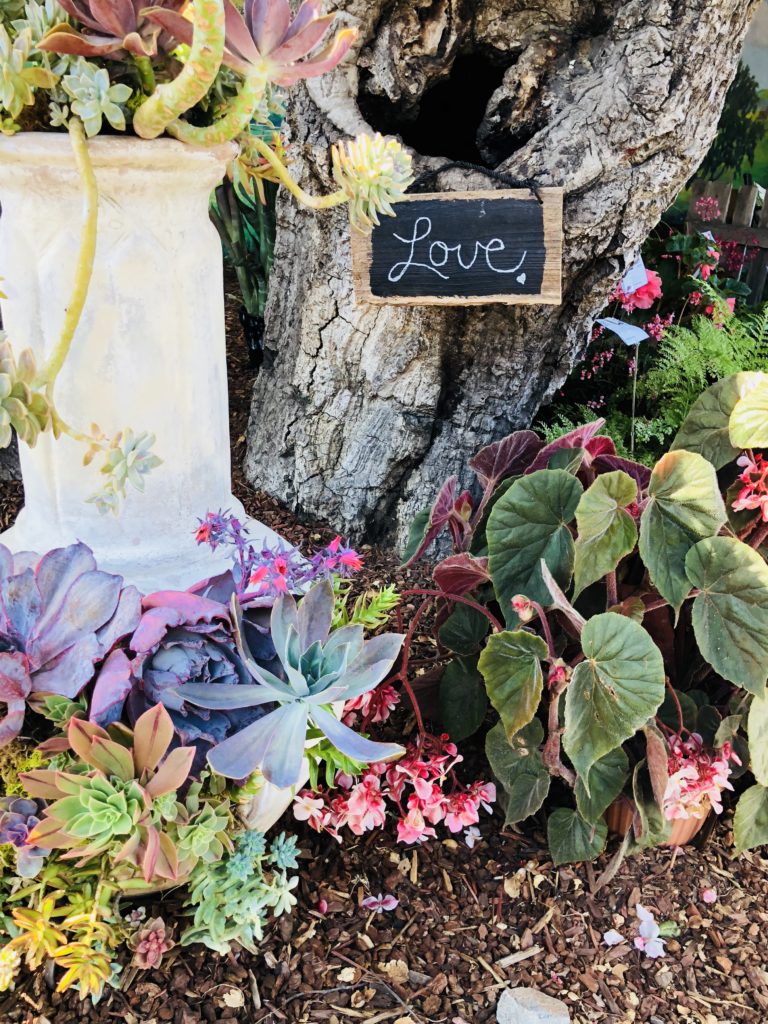
Too much fun! I can hardly wait until next year’s Monterey County Fair. Thank you for visiting my blog. Wishing you peace, love & happiness!
-
Sand Dollar Beach & Jade Cove in Big Sur
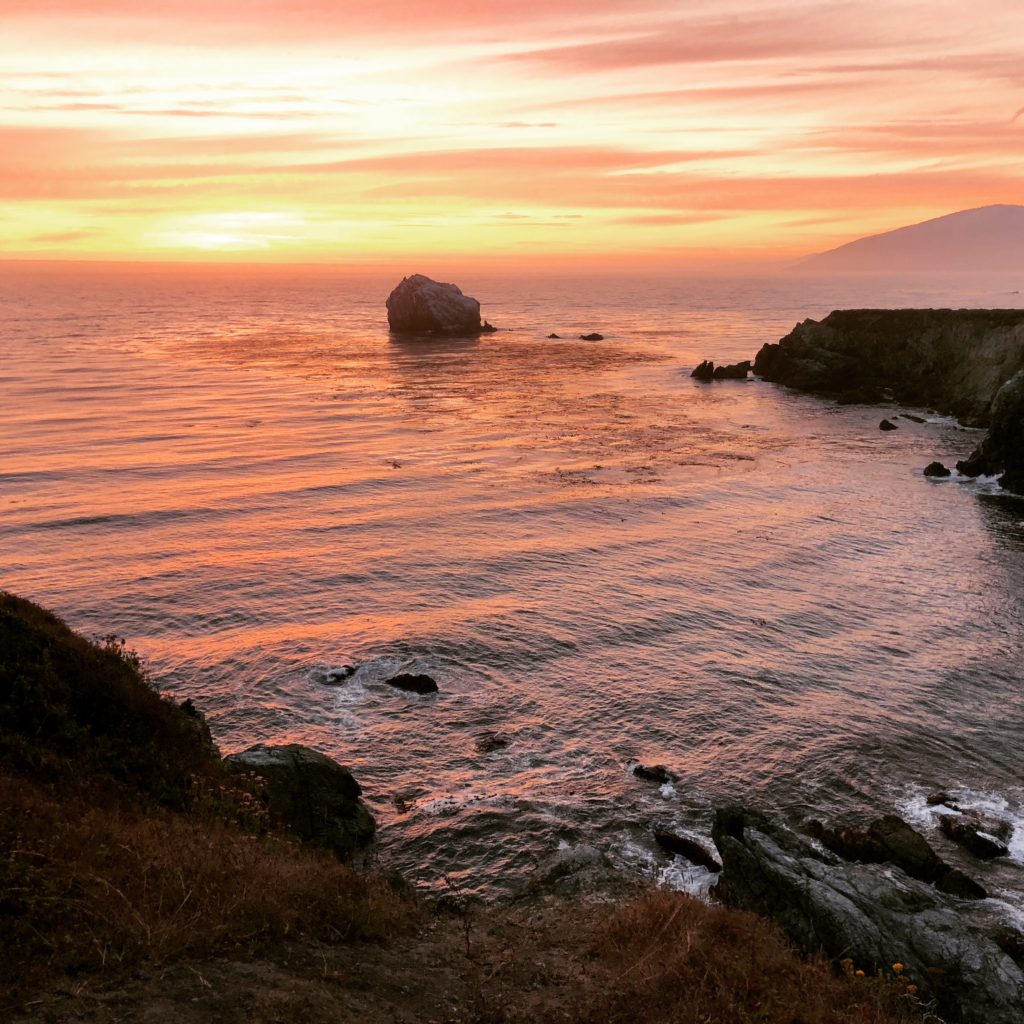
Sunset at Jade Cove in Big Sur We are heading south on Hwy 1 on a jade mission. An hour and 45 minutes after leaving Carmel, we spot it. The rinky-dink parking lot across from the Plaskett Creek Campground. Sand Dollar Beach awaits!
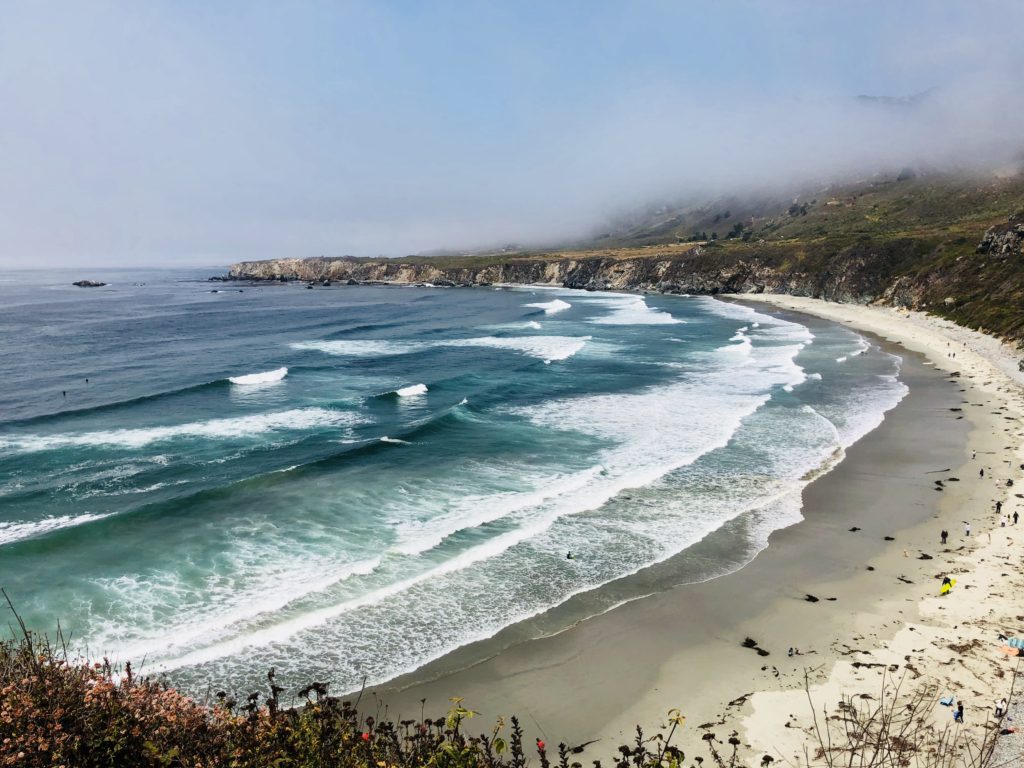
Sand Dollar Beach is the Largest Beach in the Area To get to Sand Dollar Beach, take the wide dirt path running parallel to the parking lot. The hike is .5 miles round trip. Start at the northwest corner of the parking lot and follow the trail for until you reach the steps leading 40 feet down to Sand Dollar Beach. It is extremely isolated and quiet here. There is no cell service, it vanishes shortly after you exit the south end of Carmel. No sound but the ponderous crash of waves as they break onto the beach and the whispering of the wind through the foxtails. Jagged cliffs plunge recklessly below to the sea. The rolling prairie above the beach is punctuated by several meandering trails. Many of these end abruptly and are surrounded by poison oak, however, some lead to breathtaking cliff top views of the beach.
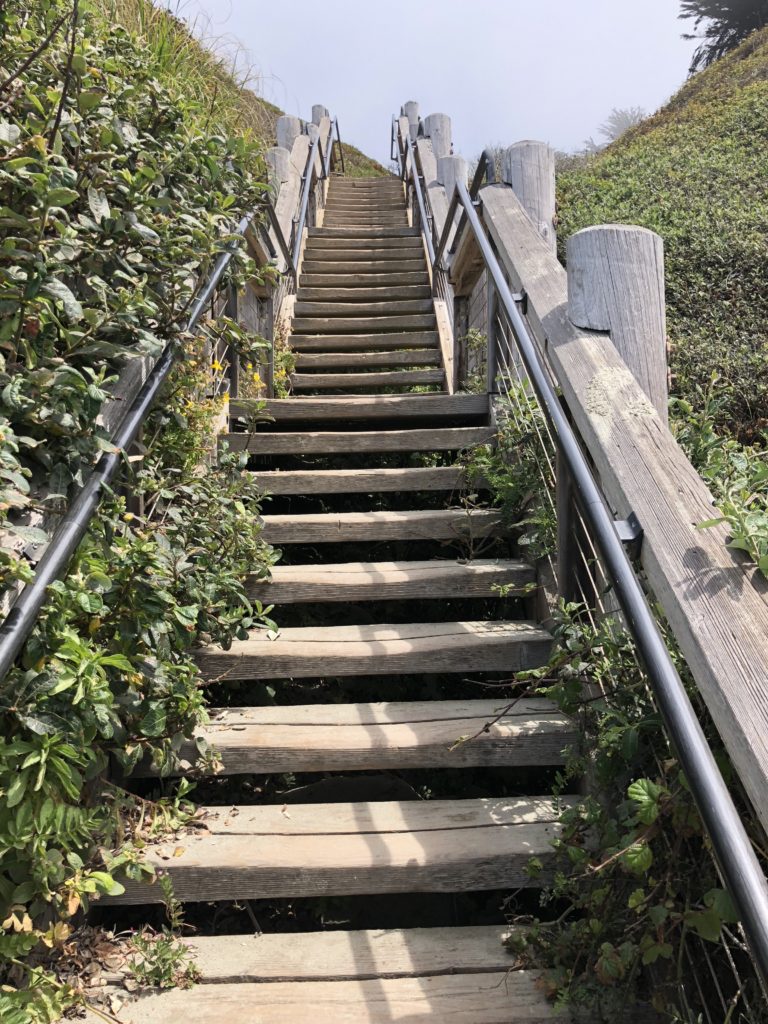
The Stairs Leading to Sand Dollar Beach There are many fun activities here including hiking, fishing, picnicking, and sunbathing. The beach is the largest in the area, a crescent-shaped arc of soft, white sand stretching for over half a mile. Surfing is also big here. Sand Dollar Beach is rated as one of the best surfing spots along this section of the coast. In addition, the level bluffs above the area are a designated hang glider and paraglider landing area. You may also see gray whales, elephant seals, sea otters, or shorebirds such as cormorants, brown pelicans, plovers, and gulls.
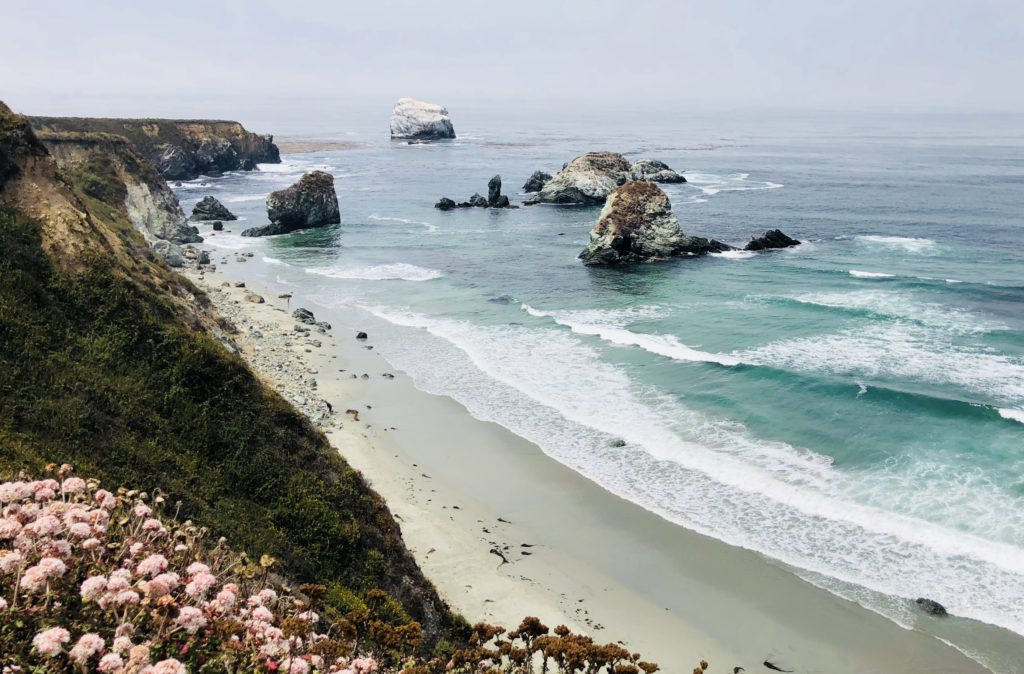
After you are done at Sand Dollar Beach, hike back to where you are parked and head further south for about 1/2 mile until you see a small pullout on the right side of Hwy 1. The trailhead to Jade Cove is unmarked, ostensibly to protect the area from overly ambitious jade seekers. Follow this trail straight back. Large jade boulders extend into the ocean and offshore you can see the picturesque 100-foot high Cave Rock, whose walls of jade are continuously pummeled by the crashing waves. As you near the ocean, follow the trail to the left through coastal grasses and wildflowers. You will pass three more boulders and then, when you see a pine tree, you are near the trail’s final descent to Jade Cove. The round trip hike is 1.5 miles.
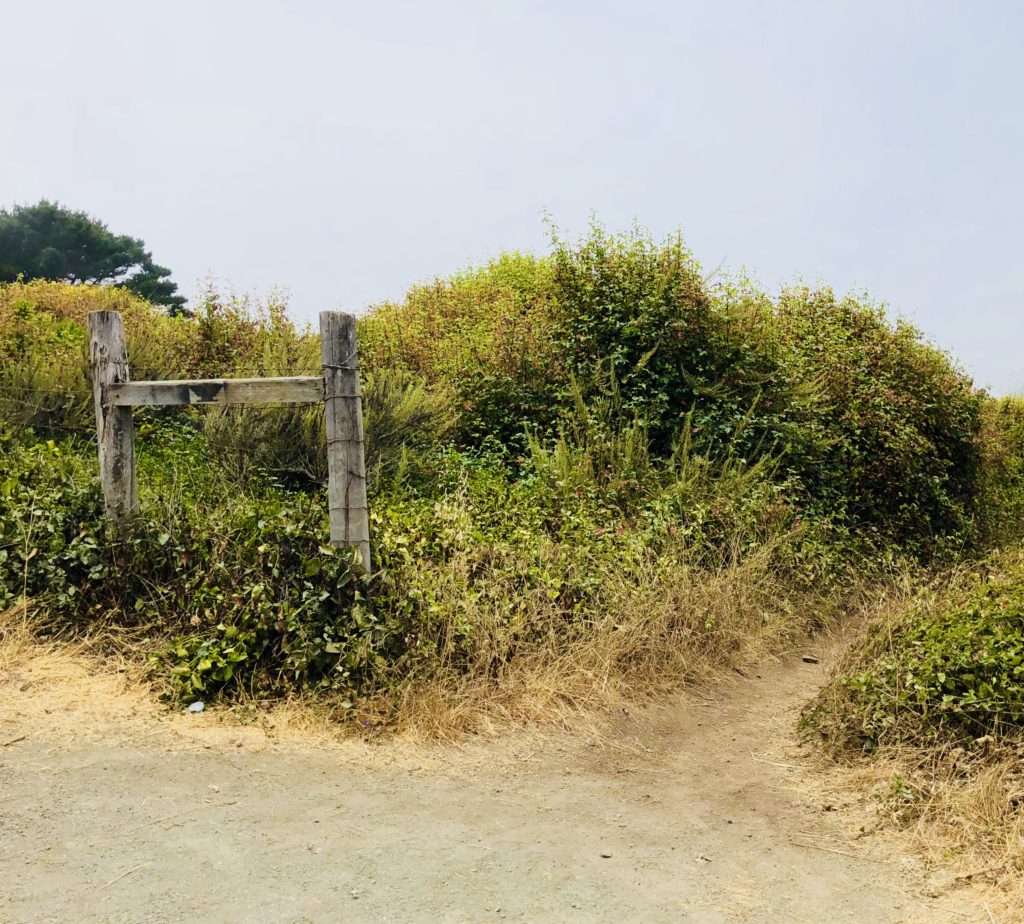
The Unmarked Trailhead to Jade Cove Jade has been prized for thousands of years and was considered the “imperial gem” in China. It has been used throughout history for tools, weapons, jewelry and religious objects. It has even been used for its metaphysical properties; some people use it for a talisman, for feng shui, or practice “jade rolling” which is said to draw out negative energy and balance your chi. Jade Cove in Big Sur is the hang out for jade-a-holics who diligently search along the beach or even perform meticulous dives off the coast in search of the beautiful mineral. There is even an annual Big Sur Jade Festival held nearby. People come from all over the world to the three-day fall event to sell and showcase their work, ranging from tiny, delicate pieces of jewelry to huge slabs of stone harvested from the sea.
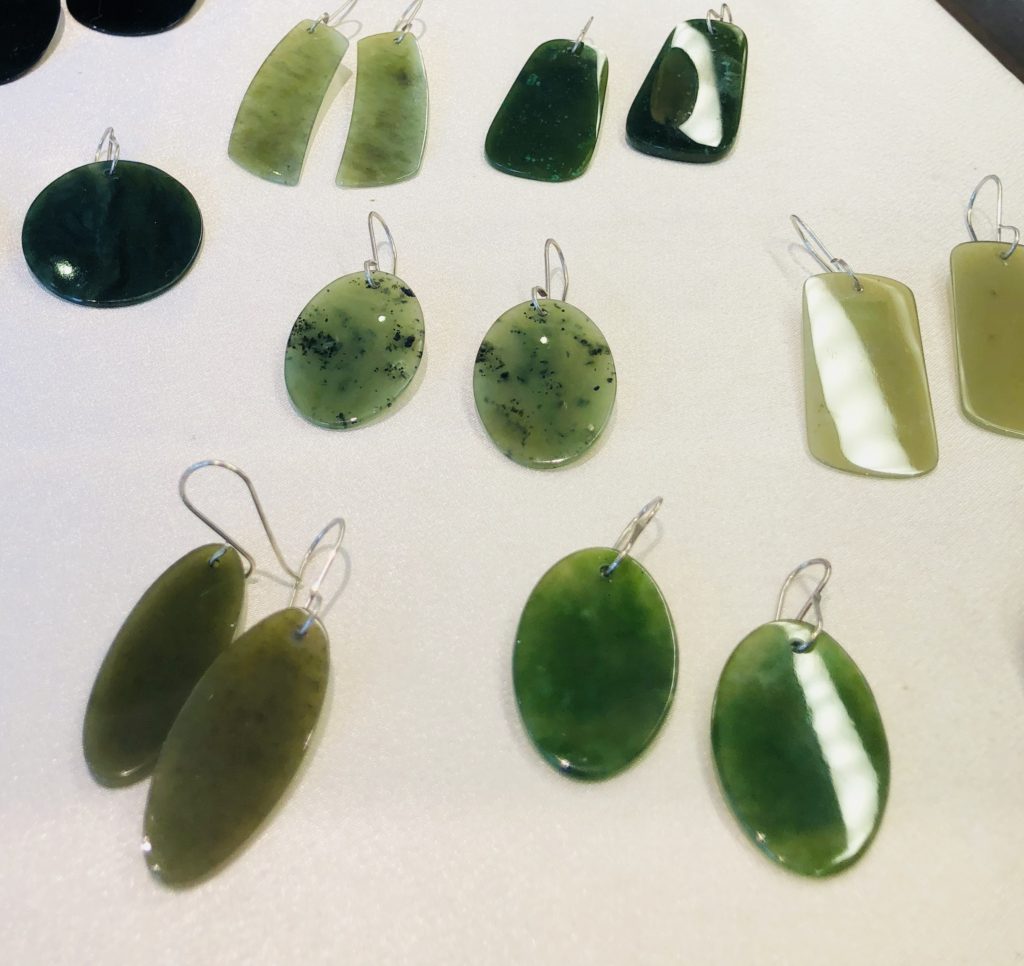
Jewelry made from Big Sur Jade; available at Nepenthe I recently met a girl running on the path to Jade Cove named Joy, who said she often finds jade there and makes it into jewelry which she occasionally sells at her mother’s shop in Pacific Grove, the Rabbit Hole. She kindly showed me what real Big Sur Jade looks like and when I returned home, I did additional research online for information that can help identify it. Apparently, the most problematic look-alike in the area is serpentine. The difference between serpentine and jade is that jade is much, much harder. How hard? If you scrape it with a pocket knife or can opener, serpentine will easily scratch, but jade will not. There are other tips offered including spitting on the stones, licking the salt off them, etc. I cannot vouch for any of these techniques.
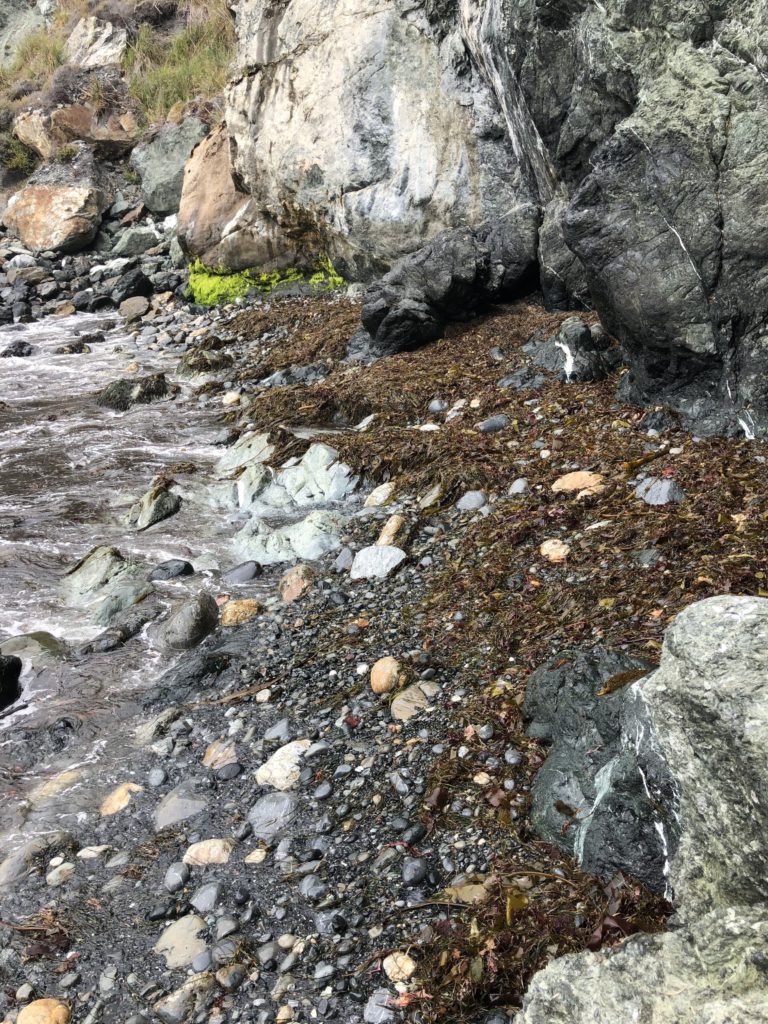
Who knows what the tide will bring in at Jade Cove! It is always a treasure hunt here. Be aware that there are regulations regarding removing jade from the area. 1. Only loose jade from submerged lands may be collected, from below the mean tide level. 2. No tools may be used except a hand tool to maneuver and lift the jade or scratch its surface to determine its authenticity. 3. Divers may use lift bags with a combined capacity of not more than 200 pounds. For more information on regulations see: montereybay.noaa.gov
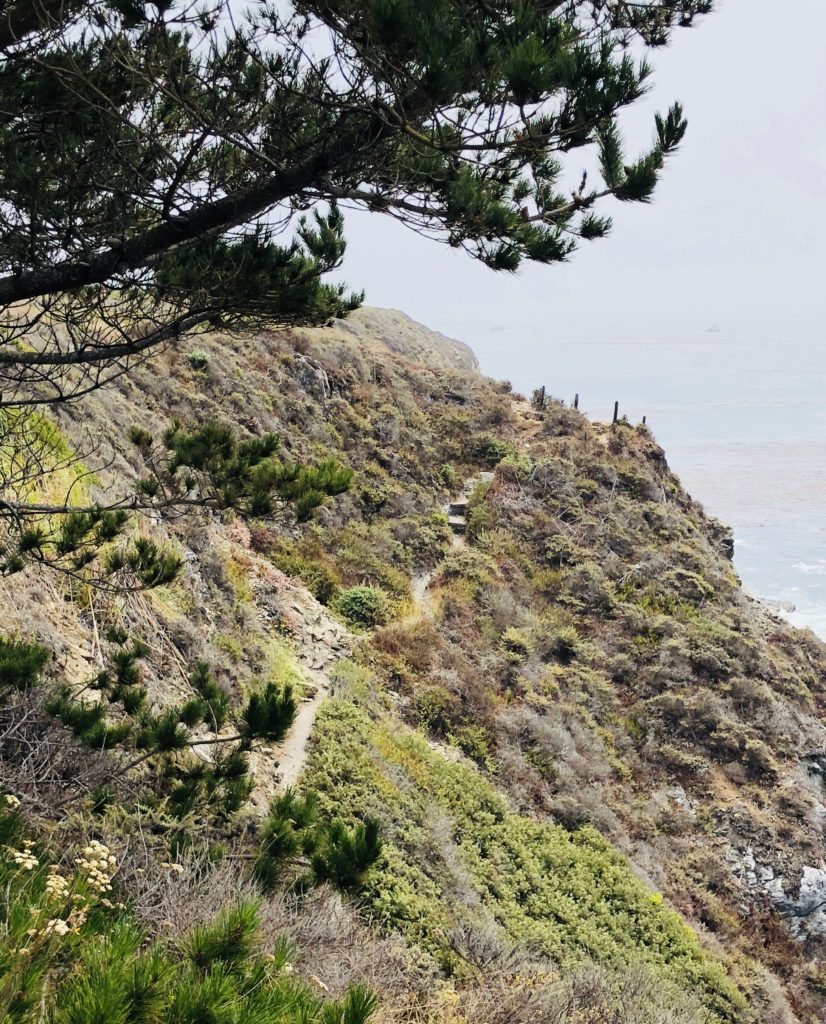
The Rambling Trail to Jade Cove Despite their rugged beauty, Jade Cove and Sand Dollar Beach can also be quite dangerous. Swimming and wading are not recommended due to dangerous rogue waves and strong rip currents. Hiking down the steep and at times slippery and ambiguous path to Jade Cove can also be a bit challenging and is not recommended for inexperienced hikers. There is a rope to hold onto at the bottom of the trail to facilitate a safe descent. Be sure to wear long sleeves, head covering and tick repellent if you will be hiking through the brush. The area is known for harboring ticks and people often leave with unintended guests, much to their chagrin.
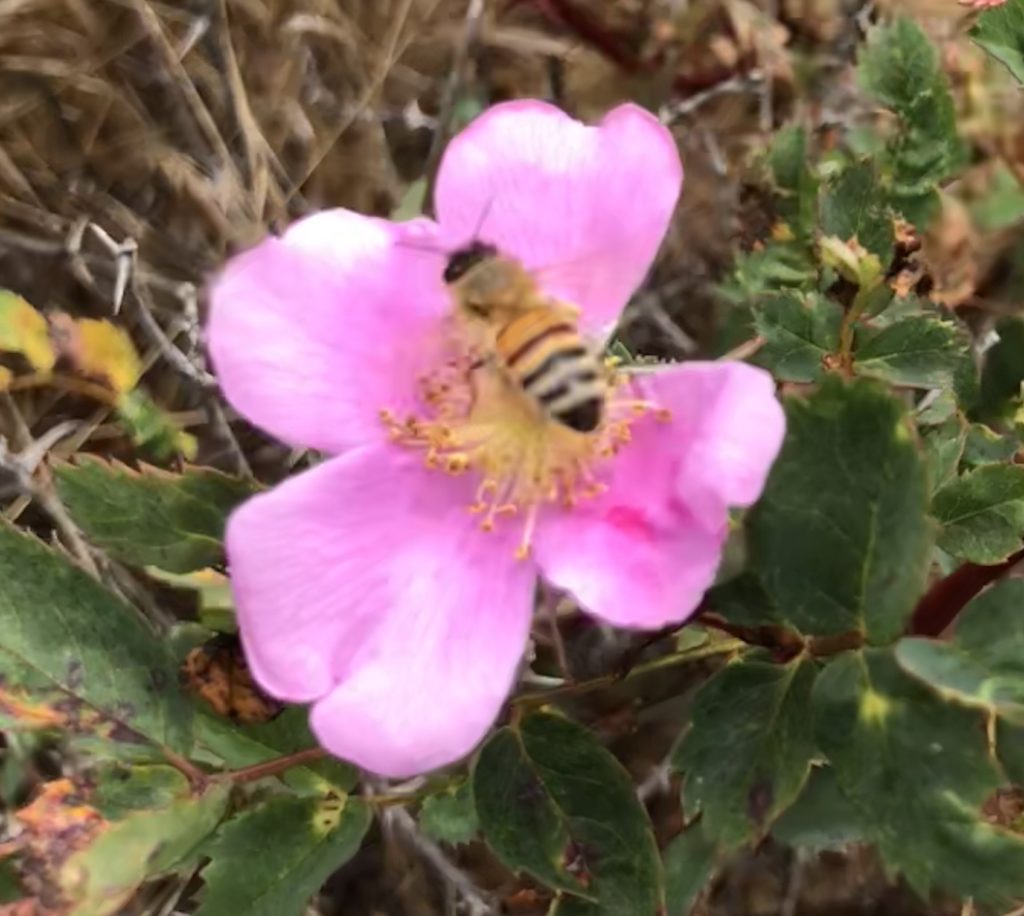
Wild Roses Growing Along the Jade Cove Trail To reach Sand Dollar Beach and Jade Cove, travel south approximately 60 miles from Rio Road in Carmel on Hwy 1 or 30 miles north of San Simeon. No camping is permitted except at Plaskett Creek Campground, located directly across Hwy 1 from the parking lot and also at nearby Kirk Creek Campground. A parking lot, picnic tables, and restrooms are available at Sand Dollar Beach, but there is a 10.00 fee to park there. If you camp at Kirk Creek or Plaskett Creek Campgrounds you can use the Sand Dollar Beach Day Use Area without paying the fee. There are also numerous turnouts nearby along Hwy 1 where you can park for free. Sand Dollar Beach and Jade Cove are open daily from sunrise-sunset and are day use only. Dogs on leashes are allowed. No bonfires are allowed on the beach.
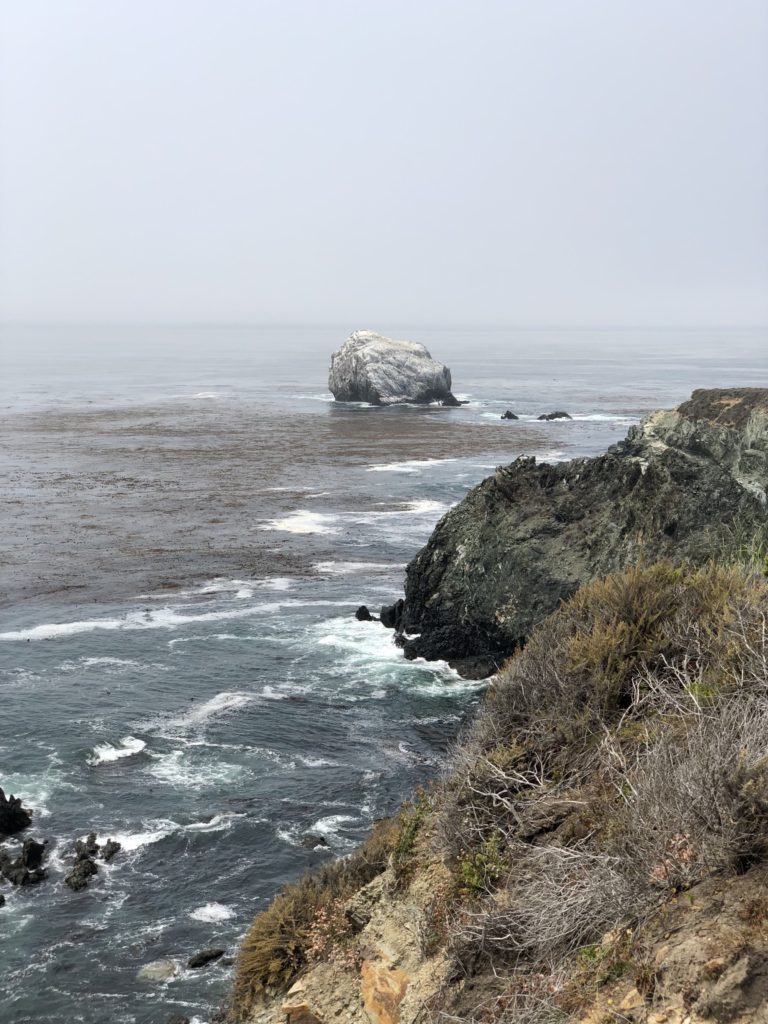
Thank you for visiting my Blog! Wishing you peace, love, happiness & beautiful vistas!
-
Purple Sand & Stone Arches at Pfeiffer Beach in Big Sur
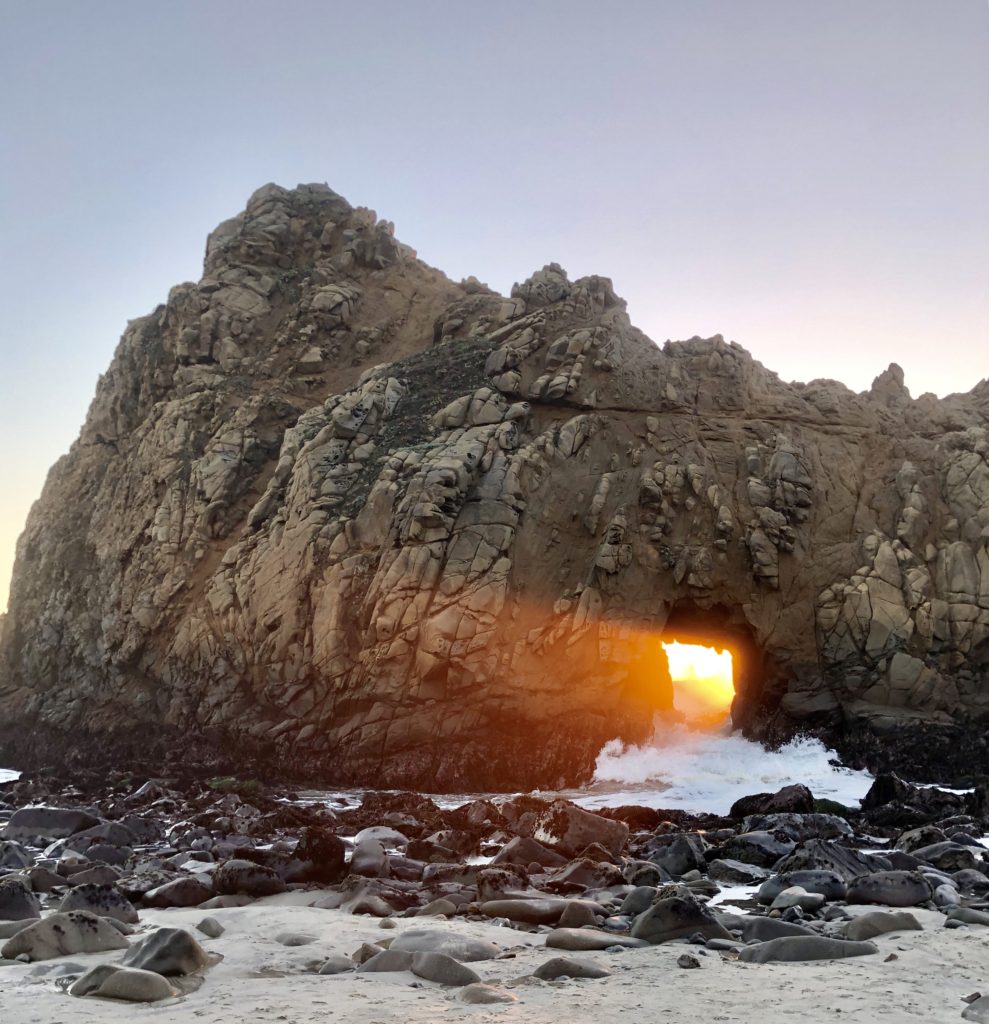
For a few brief weeks around the winter solstice, the sunset casts an ethereal glow through the Keyhole Arch. 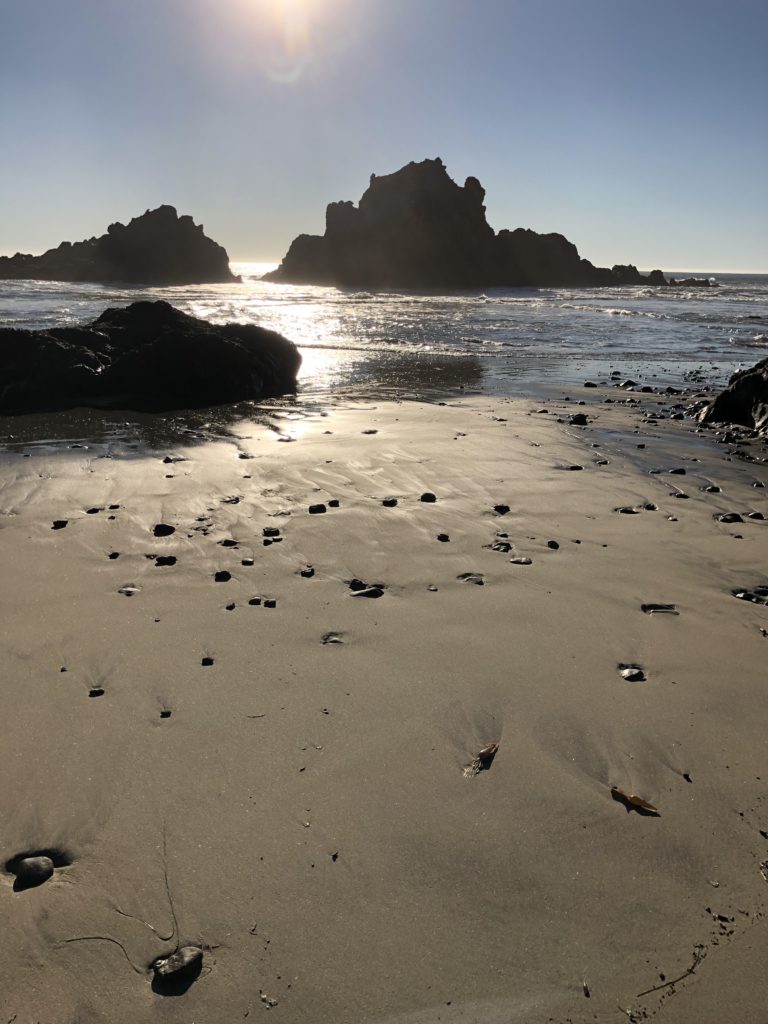
It’s fun to just sit and contemplate the myriad of sea stacks from the beautiful beach. If you are heading to Big Sur, the exquisite Pfeiffer Beach is a must see. It is easy to miss the unmarked turnoff for this secluded beach. Take a severely sharp turn off Highway 1 on Sycamore Canyon Road at mile marker 45.64, the second right turn after Big Sur Station if you are heading south. The meandering, narrow Sycamore Canyon Road is bordered by the occasional and surprising home, given the solitude. Follow Sycamore Canyon Road just over two miles to reach the parking area.
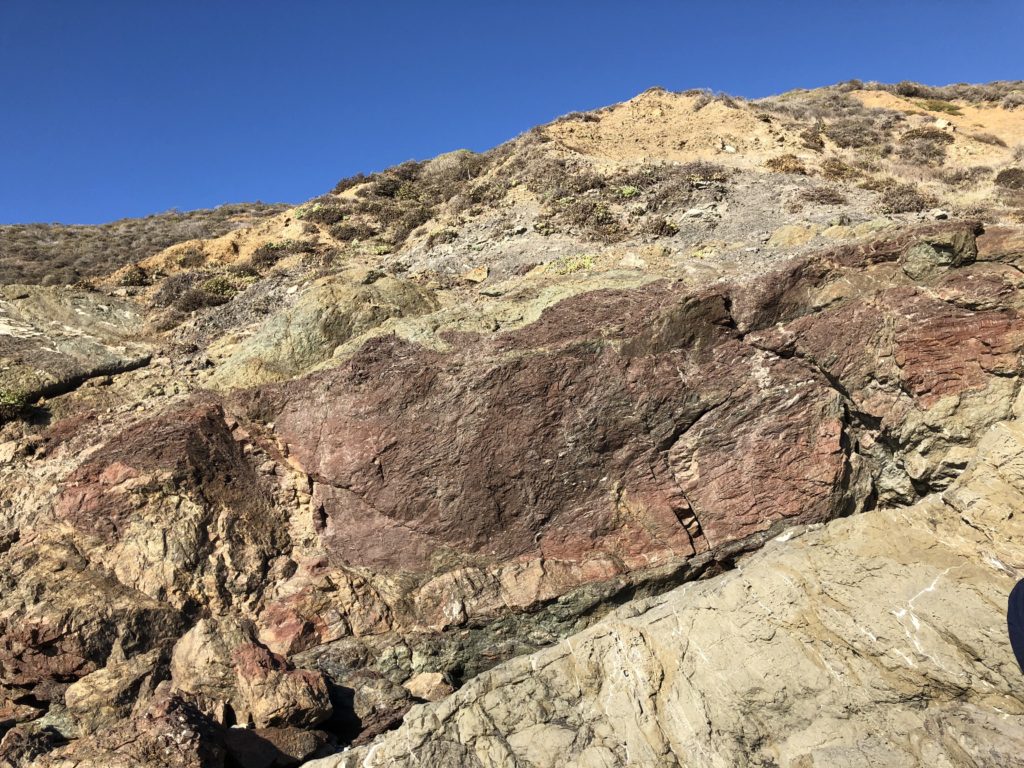
Manganese saturates the rocky outcroppings with its purple hue. 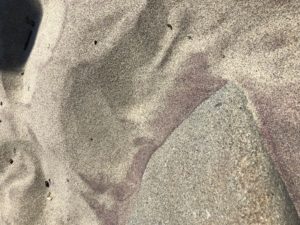
The disintegrating manganese in the cliffside creates a beautiful violet variation in the beach’s sand. Take a ridiculously short .1 mile hike on a flat, sandy path from the parking area to the beach. The path is flanked by Monterey Cypress and the Sycamore Canyon Creek, on the left, flows down to form a serene pool at the beach. The sun beats down on the purple-hued sand and huge waves roll and crash against the rocks and beach. The wind is usually blustery and harsh in this area.
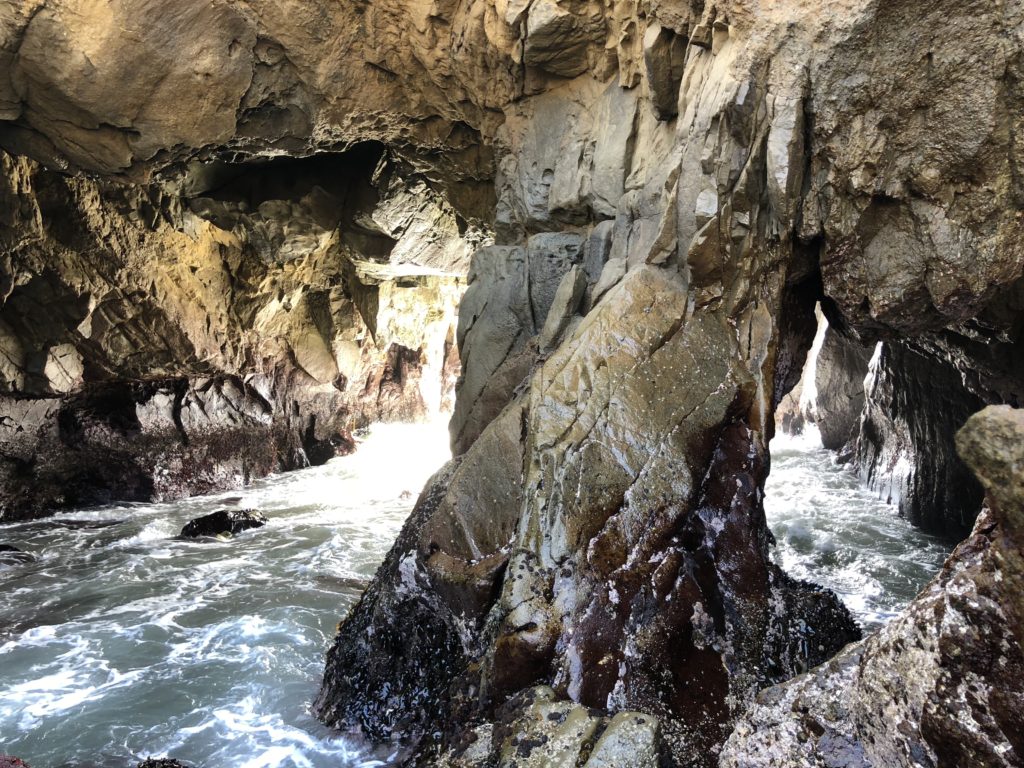
You will be wowed by the sea stack formations here. There are three arches. Two stand side by side, close to the beach. The third, called Keyhole Arch, stands further north, alone and solitary in a wall of rock several yards out in the ocean at high tide. For a few weeks, beginning in mid-December, sunlight comes through the northern keyhole arch perfectly (or close to it) due to the angle of the sunset, and photographers will gather to get that perfect shot. The surf here can also be incredibly powerful, with huge dramatic waves.
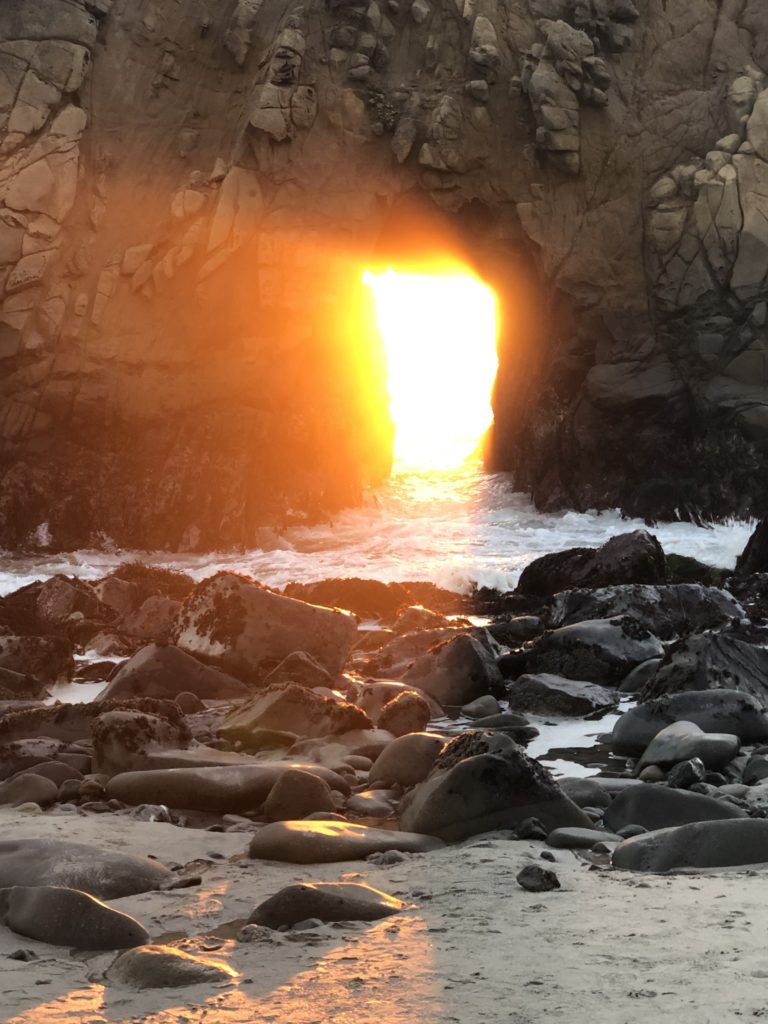
The Keyhole Arch is said to be the most-photographed attraction in Big Sur after Bixby Bridge. Pfeiffer Beach is not a state park, but rather, a part of the Los Padres Nation Forest. During the spring, the low bluffs above the beach are dotted with wildflowers, including California poppies, verbena, Indian paintbrush, and lupines. The cliffs and arches at Pfeiffer Beach are primarily granite which continues to erode over the years with the sea’s crashing waves.
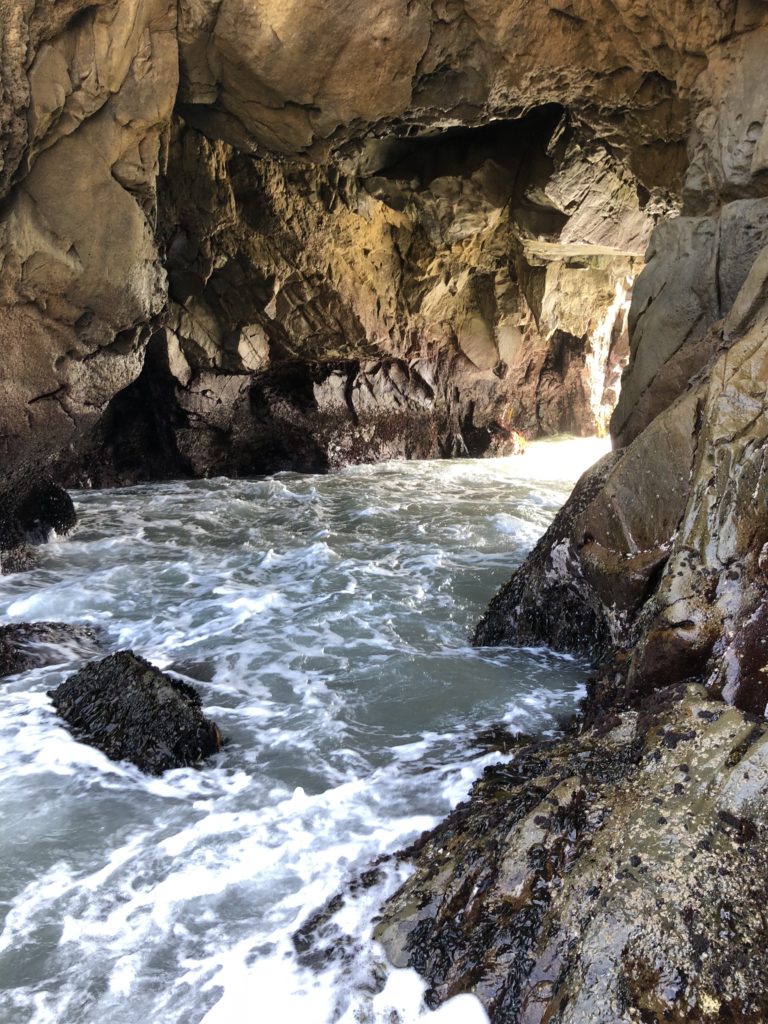
Helpful Tips:
- If you are heading south on Hwy 1, the Pfeiffer Beach turnoff is on the right, shortly after you pass the Pfeiffer Big Sur State Park entrance. The very sharp right turn is at mile marker 45.64 on unmarked Sycamore Canyon Road. Sycamore Canyon Road is a paved, ungated road.
- Pfeiffer Beach does not allow you to park outside and walk in, as you can at other places such as Point Lobos. Au Contraire. You have to pay the $10.00 entrance fee to enter in your vehicle.
- There are a limited number of parking spots and when they’re filled you are out of luck. They do not allow overnight camping, and no RVs or campers are allowed in due to the narrow road.
- Be aware that there is a “nude” section at the extreme far north end of the beach so that if you see a swimsuit or clothing lying on the beach you may be approaching a naked person!
- Pfeiffer Beach can also be extremely crowded on weekends so you may want to visit during the week when it is less busy.
- There are pit toilets available but no water to wash your hands. I recommend bringing hand sanitizer.
- It can be quite chilly and very windy, bring a sweater or jacket.
- The walk from the parking lot to the beach is short and well marked.
- Dogs on leash are allowed on the beach.
- Picnic tables and benches are available near the parking lot.
- GPS coordinates for Pfeiffer Beach are 36.2383,-121.8150.
- No campfires are allowed.
- Swimming and wading are not recommended due to dangerous waves and rip currents.
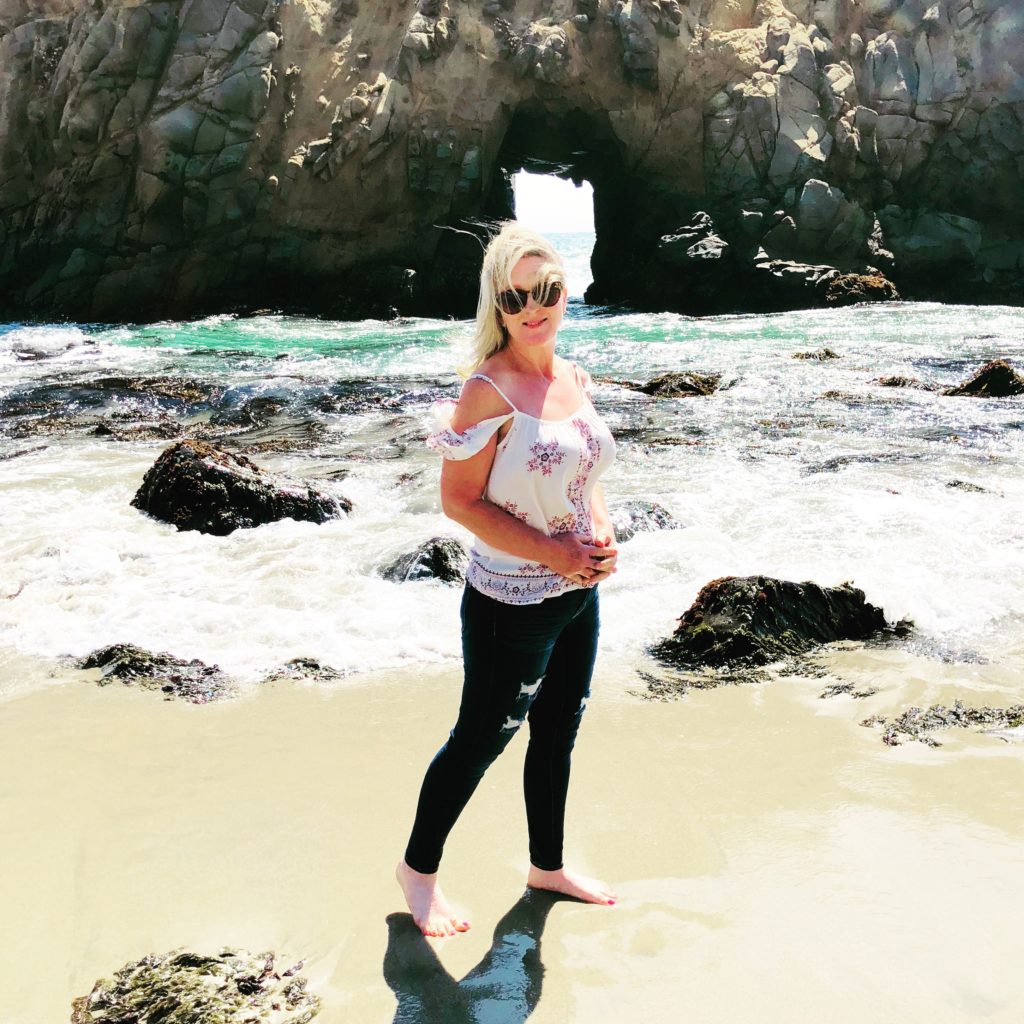
Cost:
Daily admission is 10.00 or you can purchase an annual pass for 50.00. Both cash and credit cards are accepted.
Hours:
They are open daily 8 am to sunset.
Helpful Links:
For more information, see Sycamore Canyon and Pfeiffer Beach
Thank you for visiting my blog! Wishing you peace, love, happiness, & beautiful vistas!
-
The Feast of Lanterns in Pacific Grove
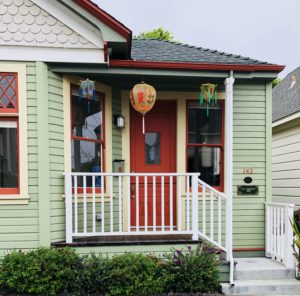
Pacific Grove, California, is a quaint Victorian seaside community filled with charming old homes. Each year it celebrates its history and culture during the Feast of Lanterns. It is Pacific Grove’s oldest tradition, beginning in 1905. It is a wonderful event that draws this charming small town together with a multitude of fun events and lasts for four days. The festival includes a lantern parade to the beach, fireworks over the bay, a sandcastle contest, a pageant, and a pet parade. The pet parade is held on Friday before the last day of the festival on the city’s main street, Lighthouse Avenue.
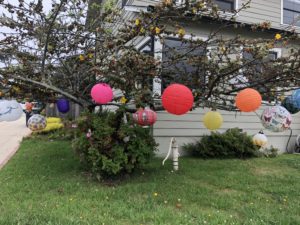
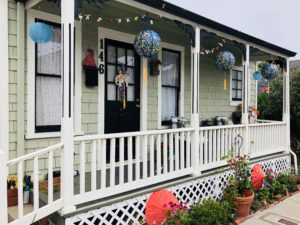
Pacific Grove has been billed as “America’s Last Hometown” and it is easy to see why, during this magical festival. Many Pacific Grove businesses & residents show their support by hanging brightly colored lanterns and lights in windows, trees, and on their porches. There are also a great many private parties held in anticipation of the festival’s finale.
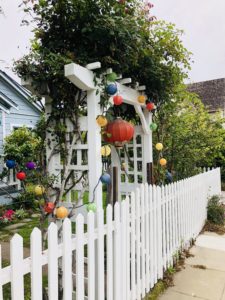
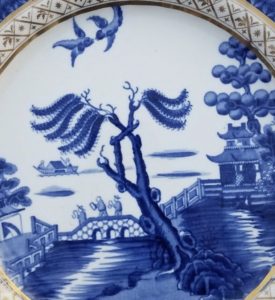
Blue Willow Plate You may have heard the legend of the blue willow, a story about the beautiful antique china pattern. In this story, Chang falls in love with the beautiful Koong-se, and they fly away as immortal doves, forever free. Pacific Grove, known as Butterfly Town, has its own spin on this story, in which the lovers fly away as Monarch butterflies. This is depicted in their annual pageant, which takes place on the last night of the festival at Lover’s Point. The story takes place in pantomime. It culminates with a burst of fireworks overhead as the lovers are seen for a brief moment before departing in the guise of Monarch butterflies.
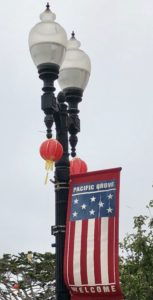
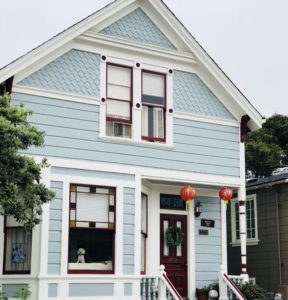
The Feast of Lanterns is held the end of July, with the culmination occurring the Saturday of the last full weekend in July. If you are planning on attending the last day’s events, be sure to arrive early in the day to set up chairs, blankets, etc. Bring warm jackets, etc. as it can become quite chilly during the evening. For more information on the festival as well as other upcoming events see Pacific Grove. Thank you for visiting my blog! Wishing you peace, love, happiness, and beautiful vistas!
-
Mission Ranch in Carmel, California
Picture yourself seated on a terrace, drinking in the sweet ocean air, with stunning views of Point Lobos, Carmel River Beach, and the Santa Lucia mountains. Sheep graze peacefully in a sweeping pasture before you. A multitude of lovely shrubs and flowers surround every building, including hydrangeas, bougainvillea, hollyhocks, and angel’s trumpets. Live oaks, eucalyptus, and centuries-old cypress trees tower gracefully over them. You are sure to be delighted no matter where your gaze wanders. This is Mission Ranch.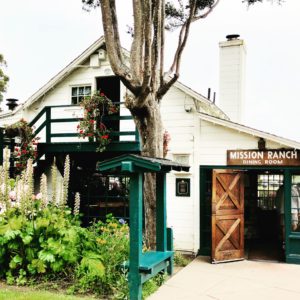 Mission Ranch is located in Carmel, California, just around the corner from the beautiful Carmel Mission Basilica. It began in the 1850s as a farm owned by John and Elizabeth Martin and their seven children. The Martins had a dairy farm and provided Monterey County with fresh cheese and butter. Their former creamery is now the site of the Mission Ranch restaurant.
Mission Ranch is located in Carmel, California, just around the corner from the beautiful Carmel Mission Basilica. It began in the 1850s as a farm owned by John and Elizabeth Martin and their seven children. The Martins had a dairy farm and provided Monterey County with fresh cheese and butter. Their former creamery is now the site of the Mission Ranch restaurant.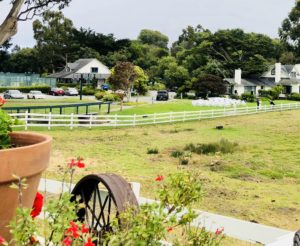 Mission Ranch is located on 22 acres owned by actor Clint Eastwood. In 1950, Clint Eastwood was 21 years old and had just been drafted. Off-duty from Fort Ord, he discovered Carmel and Mission Ranch. He loved the area and made it his second home. When developers threatened to desecrate the area and turn it into condos, he stepped up and saved the historic ranch.
Mission Ranch is located on 22 acres owned by actor Clint Eastwood. In 1950, Clint Eastwood was 21 years old and had just been drafted. Off-duty from Fort Ord, he discovered Carmel and Mission Ranch. He loved the area and made it his second home. When developers threatened to desecrate the area and turn it into condos, he stepped up and saved the historic ranch.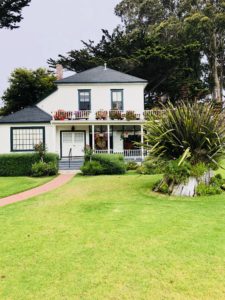 This historic ranch consists of 31 rooms located in 10 original buildings on the property, including a bunkhouse, the original farmhouse, and a honeymoon cottage. Mission Ranch is a great site for weddings, family vacations, and romantic getaways. While we were at the restaurant for dinner, there was a wedding taking place. How peaceful and serene it appeared, next to the pasture full of grazing sheep!
This historic ranch consists of 31 rooms located in 10 original buildings on the property, including a bunkhouse, the original farmhouse, and a honeymoon cottage. Mission Ranch is a great site for weddings, family vacations, and romantic getaways. While we were at the restaurant for dinner, there was a wedding taking place. How peaceful and serene it appeared, next to the pasture full of grazing sheep!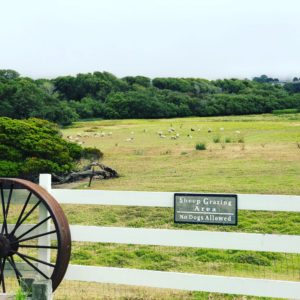 The charming restaurant is famous not only for its lovely views but also its amazing piano bar. The piano bar is a great place to strike up friendships. We recently met a lovely couple from Cote d’Azur and had a great visit with them, even though they spoke little English and we, little French!
The charming restaurant is famous not only for its lovely views but also its amazing piano bar. The piano bar is a great place to strike up friendships. We recently met a lovely couple from Cote d’Azur and had a great visit with them, even though they spoke little English and we, little French!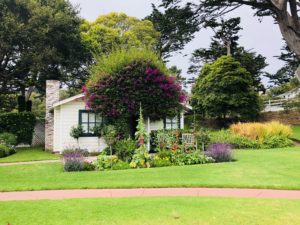 Mission Ranch is open every day except Christmas day. They have “early grazing” outdoors from 3-5 pm, but dinner service does not officially start until 5 pm. On the weekends, they offer a brunch from 10 am – 2 pm. During the week, you can get breakfast from 7 am-10:30 am. They do not accept reservations. I would recommend getting there early if you want to get a good table. When you arrive, you can choose to be seated inside or outside on the terrace.
Mission Ranch is open every day except Christmas day. They have “early grazing” outdoors from 3-5 pm, but dinner service does not officially start until 5 pm. On the weekends, they offer a brunch from 10 am – 2 pm. During the week, you can get breakfast from 7 am-10:30 am. They do not accept reservations. I would recommend getting there early if you want to get a good table. When you arrive, you can choose to be seated inside or outside on the terrace.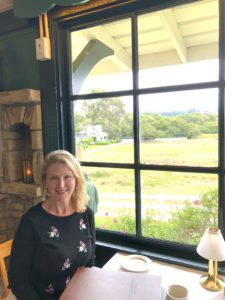 We arrived at 4:30 pm and sat at the piano bar until we were seated around 5:15 pm. Fortunately, we were seated in the east section of the restaurant at a window table overlooking the pasture and sheep with a fireplace next to us. This is much quieter than the adjacent dining room near the bar and I would highly recommend it. There is a plethora of yummy food on the menu including appetizers, soups & salads and fabulous dinner entrees. I chose the slow roasted prime rib and it was too delicious!
We arrived at 4:30 pm and sat at the piano bar until we were seated around 5:15 pm. Fortunately, we were seated in the east section of the restaurant at a window table overlooking the pasture and sheep with a fireplace next to us. This is much quieter than the adjacent dining room near the bar and I would highly recommend it. There is a plethora of yummy food on the menu including appetizers, soups & salads and fabulous dinner entrees. I chose the slow roasted prime rib and it was too delicious!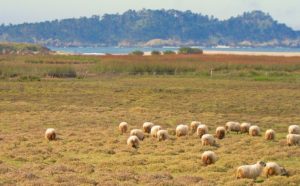
- Pets are not allowed in the restaurant except for service animals.
- Bring a jacket or sweater for dining on the outdoor terrace as it can get chilly, even with the outdoor heaters.
- Piano music is played nightly from 5-9 pm.
Location: 26270 Delores St., Carmel, CaliforniaPhone: 831-624-3824Website: Mission Ranch. Thank you for visiting my blog! Wishing you peace, love, happiness, & beautiful vistas!
Thank you for visiting my blog! Wishing you peace, love, happiness, & beautiful vistas! -
Ventana: Birthday Celebration in Beautiful Big Sur
This is the third in my series of iconic Big Sur restaurant reviews; see links for Nepenthe and Big Sur River Inn.A thick veil of fog hovers over the water and blankets the hills as we head south on Highway 1. The road twists and turns, hugging the coastline. As we near Garrapata, torpedo-like rock formations of sandstone appear otherworldly. The ocean rumbles and waves gallop like horses toward the shore, creating milky froth as they crash into and over jagged rocks. There are four squid boats anchored off Rocky Point, their eerie green and yellow lights penetrating the mist.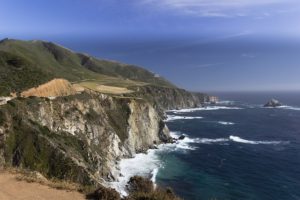 We are headed for my birthday celebration at Ventana, a resort complex in the most heavenly location ever. Ventana means “window” in Spanish. Secluded between the Santa Lucia mountains and the Pacific Ocean, Ventana’s weathered cedar structures perch on a hillside 1200 feet above the coast. Picturesque Post Creek meanders through the 160-acre property, which contains landscaped pathways, canyons, groves of redwoods, Japanese hot baths and two pools. There are 59 guest rooms, suites, and villas and 15 safari-style canvas “glamping” tents, as well as tent only camping sites.
We are headed for my birthday celebration at Ventana, a resort complex in the most heavenly location ever. Ventana means “window” in Spanish. Secluded between the Santa Lucia mountains and the Pacific Ocean, Ventana’s weathered cedar structures perch on a hillside 1200 feet above the coast. Picturesque Post Creek meanders through the 160-acre property, which contains landscaped pathways, canyons, groves of redwoods, Japanese hot baths and two pools. There are 59 guest rooms, suites, and villas and 15 safari-style canvas “glamping” tents, as well as tent only camping sites.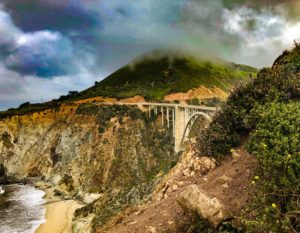 HistoryVentana is located on land first homesteaded by the Post family in 1890. The Post home, which housed several generations of the family, still stands at the entrance. Ventana first opened in 1975, the creation of Lawrence Spector. Spector co-produced the 1969 anti-establishment hit “Easy Rider” which was written by Peter Fonda, Terry Southern, and Dennis Hopper. Ventana still retains vestiges of its ‘70s hippie beginnings, from its original weathered cedar siding to its clothing-optional policy in the hot baths and the Mountain Pool and nude sunbathing in prescribed areas. From the beginning, Ventana has drawn celebrities, including Dennis Hopper, Ali McGraw, Steve McQueen, Chevy Chase, Goldie Hawn, Barbara Streisand, Julia Roberts, Robert DeNiro, Brad Pitt, Jennifer Aniston, Oprah Winfrey, and Lupita Nyong’o, among many others.
HistoryVentana is located on land first homesteaded by the Post family in 1890. The Post home, which housed several generations of the family, still stands at the entrance. Ventana first opened in 1975, the creation of Lawrence Spector. Spector co-produced the 1969 anti-establishment hit “Easy Rider” which was written by Peter Fonda, Terry Southern, and Dennis Hopper. Ventana still retains vestiges of its ‘70s hippie beginnings, from its original weathered cedar siding to its clothing-optional policy in the hot baths and the Mountain Pool and nude sunbathing in prescribed areas. From the beginning, Ventana has drawn celebrities, including Dennis Hopper, Ali McGraw, Steve McQueen, Chevy Chase, Goldie Hawn, Barbara Streisand, Julia Roberts, Robert DeNiro, Brad Pitt, Jennifer Aniston, Oprah Winfrey, and Lupita Nyong’o, among many others. GlampingThe glamping area, one of the newest renovations, is nestled in a 20-acre ancient redwood forest a half mile hike beneath the main resort. Each tent includes beds with luxury hotel linens, hot and cold water, and propane- and wood-burning fire pits. All glamping furniture is built from “reclaimed” redwood from the property. Ascot wine-and-cheese picnic backpacks, custom curated picnic baskets, natural timber walking sticks, and daily housekeeping service are also provided. But wait, there’s more! The glamping tents also include electrical and USB plug-ins, teak-enclosed showers with heated floors, a sheet turndown service every night, hot cocoa, and hot-water bottles to warm your sheets. Apparently, these are often sold out. Actress Mandy Moore recently celebrated her birthday during a girls’ glamping weekend at Ventana.
GlampingThe glamping area, one of the newest renovations, is nestled in a 20-acre ancient redwood forest a half mile hike beneath the main resort. Each tent includes beds with luxury hotel linens, hot and cold water, and propane- and wood-burning fire pits. All glamping furniture is built from “reclaimed” redwood from the property. Ascot wine-and-cheese picnic backpacks, custom curated picnic baskets, natural timber walking sticks, and daily housekeeping service are also provided. But wait, there’s more! The glamping tents also include electrical and USB plug-ins, teak-enclosed showers with heated floors, a sheet turndown service every night, hot cocoa, and hot-water bottles to warm your sheets. Apparently, these are often sold out. Actress Mandy Moore recently celebrated her birthday during a girls’ glamping weekend at Ventana.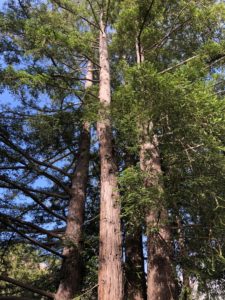 ClassesThis IS Big Sur and not surprisingly, Ventana also offers some pretty far-out classes, including meditation, yoga, tai chi, Pilates, beekeeping, charcoal sketching, mandala coloring for couples, string art & mindfulness, candle making and aromatherapy, bird-watching, photography hikes, mushroom foraging, daily hour-long guided walks, and drum circles. Taylor Swift recently took a falconry class at Ventana during her stay this year.Glass HouseThe Glass House Gallery sells paintings, sculptures, jewelry, clothing, ceramics and local photography. You can have your picture taken on the see-through overlook outside the gallery and fool your friends into thinking you are standing on the edge of a precipice!WeddingsVentana hosts many weddings. Their website states “Imagine saying your vows overlooking the canyons and forest or surrounded by redwoods. Enjoying a sunset reception or dinner under a canopied arbor. And dancing under the stars to celebrate your new adventure together.” Apparently, both Natalie Portman and Ann Hathaway could imagine this. Both had their wedding receptions here.
ClassesThis IS Big Sur and not surprisingly, Ventana also offers some pretty far-out classes, including meditation, yoga, tai chi, Pilates, beekeeping, charcoal sketching, mandala coloring for couples, string art & mindfulness, candle making and aromatherapy, bird-watching, photography hikes, mushroom foraging, daily hour-long guided walks, and drum circles. Taylor Swift recently took a falconry class at Ventana during her stay this year.Glass HouseThe Glass House Gallery sells paintings, sculptures, jewelry, clothing, ceramics and local photography. You can have your picture taken on the see-through overlook outside the gallery and fool your friends into thinking you are standing on the edge of a precipice!WeddingsVentana hosts many weddings. Their website states “Imagine saying your vows overlooking the canyons and forest or surrounded by redwoods. Enjoying a sunset reception or dinner under a canopied arbor. And dancing under the stars to celebrate your new adventure together.” Apparently, both Natalie Portman and Ann Hathaway could imagine this. Both had their wedding receptions here.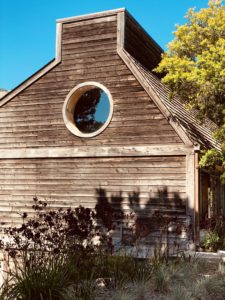

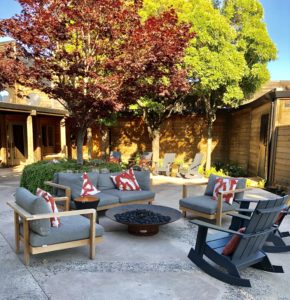 The RestaurantThe Sur House restaurant features delicious concoctions by Executive Chef Paul Corsentino. Meals feature coastal cuisine, including local seafood, free-range meats, and fresh produce from Ventana’s gardens. There is also a 10,000-bottle wine cellar featuring central coast wines selected by local vintners and Ventana’s sommelier. Craft cocktails and beer are also offered. Sur House decor is both elegant and rustic, featuring natural wood and leather furnishings.
The RestaurantThe Sur House restaurant features delicious concoctions by Executive Chef Paul Corsentino. Meals feature coastal cuisine, including local seafood, free-range meats, and fresh produce from Ventana’s gardens. There is also a 10,000-bottle wine cellar featuring central coast wines selected by local vintners and Ventana’s sommelier. Craft cocktails and beer are also offered. Sur House decor is both elegant and rustic, featuring natural wood and leather furnishings.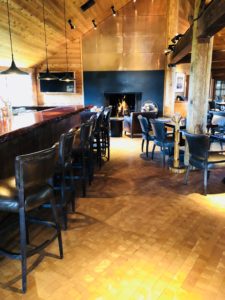
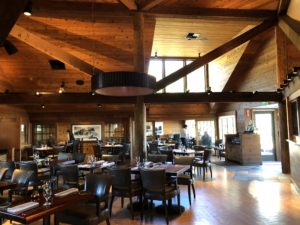 We arrived at our 6:30 pm reservation time and had planned to dine on the terrace. Instead, we were told that we could not be seated outdoors for our meal because “the temperature drops too quickly” and it would be too cold for us. The temperature was a balmy 75 degrees, nonetheless, we were ushered to an indoor table by a window where, like a fish in a glass aquarium, I could envy, in the distance, a couple having drinks at a table overlooking the ocean. After ordering our food, I dashed outside to get some photos of the terrace.
We arrived at our 6:30 pm reservation time and had planned to dine on the terrace. Instead, we were told that we could not be seated outdoors for our meal because “the temperature drops too quickly” and it would be too cold for us. The temperature was a balmy 75 degrees, nonetheless, we were ushered to an indoor table by a window where, like a fish in a glass aquarium, I could envy, in the distance, a couple having drinks at a table overlooking the ocean. After ordering our food, I dashed outside to get some photos of the terrace.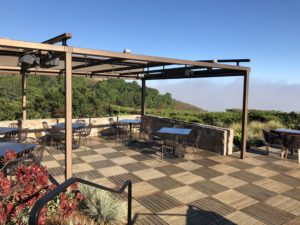
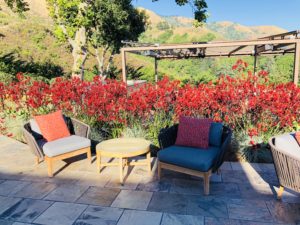
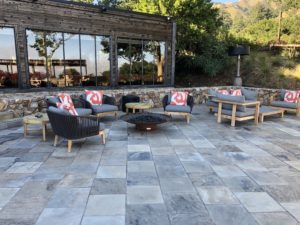 Ventana offers a prix fixe meal; you are offered four courses for a set price. However, they do allow you to order items a la carte. My friend and I shared our first and second courses, the tuna tartare and soft shell crab with tropical fruit, melon salsa, and Napa cabbage. For the third course, my friend ordered the Alaskan Halibut and I the Ora King Salmon. These were both superb. For my birthday, they brought a platter with samplings of ice cream, mousse, fruit, and cake. I felt like I had just finished Thanksgiving dinner when we were through. It was decadent and thoroughly satisfying.
Ventana offers a prix fixe meal; you are offered four courses for a set price. However, they do allow you to order items a la carte. My friend and I shared our first and second courses, the tuna tartare and soft shell crab with tropical fruit, melon salsa, and Napa cabbage. For the third course, my friend ordered the Alaskan Halibut and I the Ora King Salmon. These were both superb. For my birthday, they brought a platter with samplings of ice cream, mousse, fruit, and cake. I felt like I had just finished Thanksgiving dinner when we were through. It was decadent and thoroughly satisfying.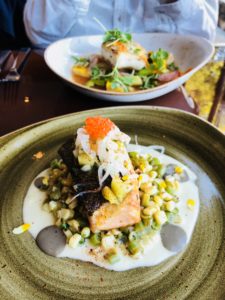
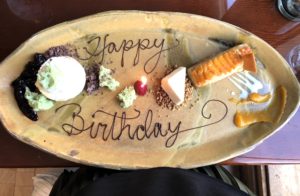 Following our meal, I watched through the window as hummingbirds levitated up and down through the air. Then three black crows landed on the terrace, the black of their feathers contrasting with the deep oranges and reds of the landscaping and furniture. It was a wonderful birthday. Good food, fresh air, and a beautiful vista of the ocean. And that’s what Big Sur is all about.
Following our meal, I watched through the window as hummingbirds levitated up and down through the air. Then three black crows landed on the terrace, the black of their feathers contrasting with the deep oranges and reds of the landscaping and furniture. It was a wonderful birthday. Good food, fresh air, and a beautiful vista of the ocean. And that’s what Big Sur is all about.
- For more information see Ventana.
- Address: 48123 Highway 1, Big Sur, CA 93920. Directions on how to get here.
- Phone: 800-427-7623.
- Sample Menus
- Check road conditions before you go, it is easy to do. Go to Caltrans and enter 1 (the highway number) then search.
Thank you for visiting my blog. Wishing you peace, love, happiness, & beautiful vistas!
-
Obon Festival in Seaside, California
Obon translated means “Lantern Festival” or “Festival of the Dead”, and is a holiday honoring those who have passed on. Obon is somewhat like the Day of the Dead, the Celtic Samhain, or in Catholicism, All Souls Day, which all involve paying homage to loved ones who are now departed. But it is also a celebration, filled with large gatherings, family reunions, and bright lanterns. One very beautiful Obon ceremony in Japan is the lighting of paper lanterns and sending them out to sea in honor of ancestors who have died..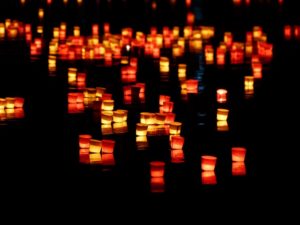 The first American Obon Festival was held in Hawaii in 1910 but not in the continental United States until 1931 when it was held at the Buddhist Church in San Francisco. Obon Festival has since remained one of the most important Japanese-American traditions here.
The first American Obon Festival was held in Hawaii in 1910 but not in the continental United States until 1931 when it was held at the Buddhist Church in San Francisco. Obon Festival has since remained one of the most important Japanese-American traditions here.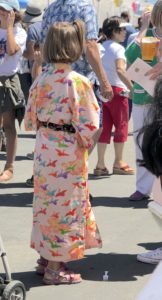
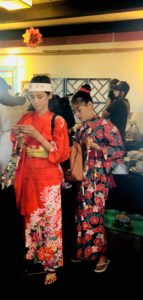 The Buddhist Temple of the Monterey Peninsula held their 72nd annual Obon Festival today, July 8, 2018, at 1155 Noche Buena Street in Seaside, California from 12:00– 5:00 p.m. This festival draws a huge crowd and is always fun. People show sincere Obon enthusiasm and the wearing of Japanese inspired clothing is encouraged.
The Buddhist Temple of the Monterey Peninsula held their 72nd annual Obon Festival today, July 8, 2018, at 1155 Noche Buena Street in Seaside, California from 12:00– 5:00 p.m. This festival draws a huge crowd and is always fun. People show sincere Obon enthusiasm and the wearing of Japanese inspired clothing is encouraged.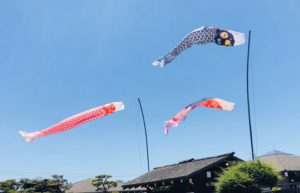 When you first approach the temple you see three koinobori (also known as carp) windsocks flying. In Japanese culture, the carp symbolizes courage and strength because of its ability to swim up a waterfall. In Buddhism, the fish is an embodiment of well-being, happiness, and freedom, and symbolizes living in a state of fearlessness, without danger of drowning in the ocean of sufferings.
When you first approach the temple you see three koinobori (also known as carp) windsocks flying. In Japanese culture, the carp symbolizes courage and strength because of its ability to swim up a waterfall. In Buddhism, the fish is an embodiment of well-being, happiness, and freedom, and symbolizes living in a state of fearlessness, without danger of drowning in the ocean of sufferings.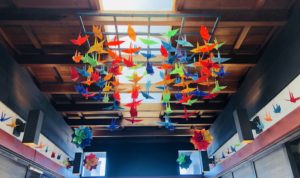 As you enter the temple you see origami crane garlands draping the walls and hanging from the ceiling. In Japan, the crane is a symbol of good health and luck. It is said that if you fold 1000 cranes, you are granted a good wish. “In folding paper cranes, we see how a small square of paper can magically transform into an expression of beauty, love, and compassion. The crane comes to life after we set an intention, pay careful attention to each fold, and at the final step, spread the crane’s wings wide for it to soar.” See Paper Cranes
As you enter the temple you see origami crane garlands draping the walls and hanging from the ceiling. In Japan, the crane is a symbol of good health and luck. It is said that if you fold 1000 cranes, you are granted a good wish. “In folding paper cranes, we see how a small square of paper can magically transform into an expression of beauty, love, and compassion. The crane comes to life after we set an intention, pay careful attention to each fold, and at the final step, spread the crane’s wings wide for it to soar.” See Paper Cranes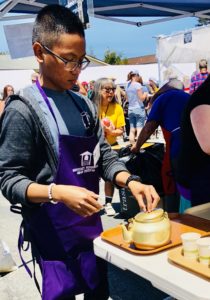
Free tea is offered to the public. It is delicious! 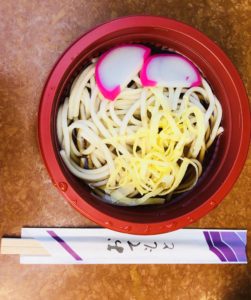
Udon, before being liberally sprinkled with scallions & shichimi What can you do at the Obon Festival? First, sample delicious Japanese foods prepared by chefs from local Japanese restaurants, including: tempura, sushi, beef and chicken teriyaki, udon (noodles in broth), Kushi katsu (deep fried pork), gyoza (steamed dumpling with ground pork and vegetables), lumpia (deep-fried egg rolls), & chicken karaage (fried chicken). I tried the udon and it was amazing!
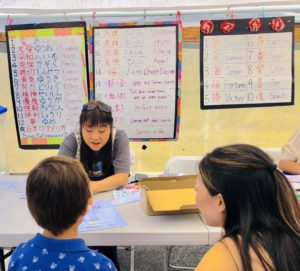
Learning Japanese is easy when you have a good teacher! 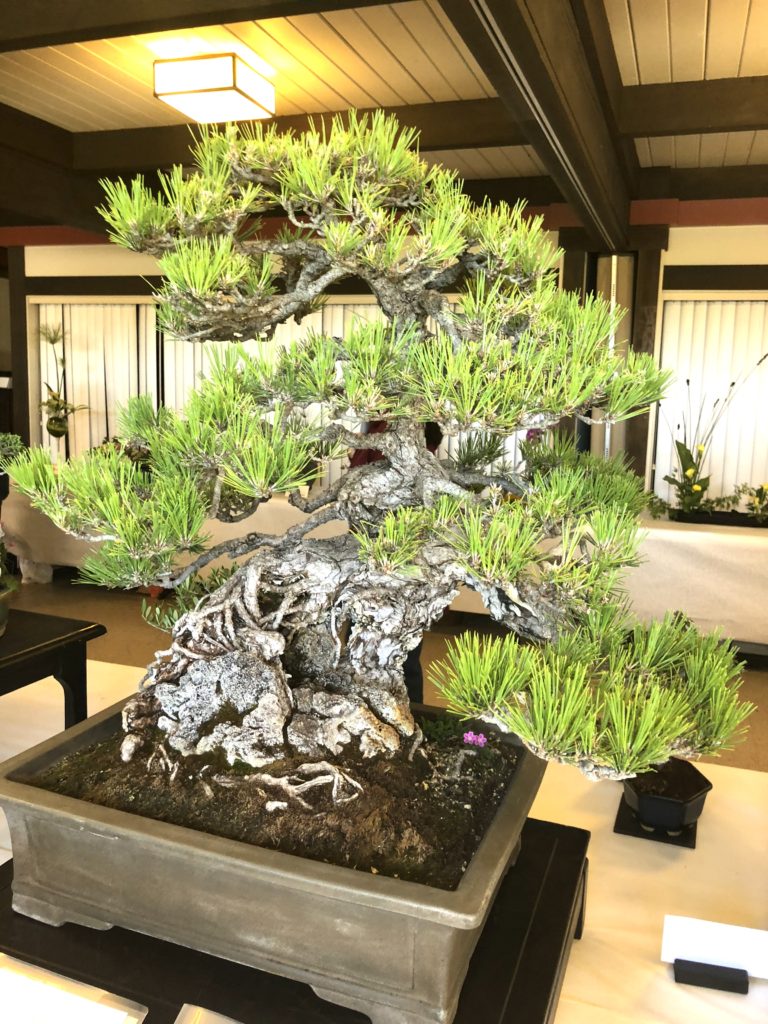
This Japanese Black Pine Bonsai is 69 years old! While at the festival you can listen to the rhythmic Taiko drumming and dance during the Bon Odori, or community Japanese folk dancing. You can listen to an educational lecture on Buddhism. You can learn how to speak and write Japanese. You can watch martial arts demonstrations and witness a traditional Japanese tea ceremony. There is also a beautiful display of bonsai and ikebana flower arrangements and great demonstrations on how to do it yourself. If you missed this great event today, there is always next year!
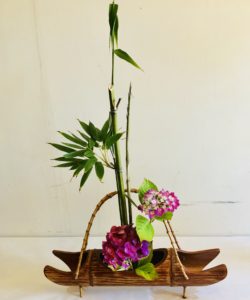
Beautiful Ikebana Arrangement Thank you for visiting my blog! Wishing you peace, love, happiness, & beautiful vistas!
-
Nepenthe’s Phoenix: Bohemian Bliss in Big Sur
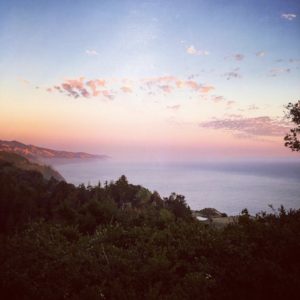 Nepenthe is an ancient Greek word meaning an elixir for sorrow, literally, a “drug of forgetfulness”. And sorrow you will indeed forget when you see the jaw-dropping panoramic view of the Big Sur coastline at this iconic restaurant. Nepenthe started out as a very simple cabin in 1925, located downhill from the log house where writer Henry Miller lived. Orson Welles bought the cabin as a gift for his new bride, the movie star and World War II pinup girl Rita Hayworth. Unfortunately, the relationship failed, and the Big Sur cabin was abandoned. After Welles and Hayworth divorced, Bill and Madelaine “Lolly” Fassett, with five children in tow, purchased the cabin and 12 acres for $12,000. They employed Rowan Maiden, an apprentice of Frank Lloyd Wright, to create Nepenthe. Redwoods hewn from area canyons and hand-made adobe bricks were used. Nepenthe opened in 1949 with an open terrace design so that people could enjoy drinking, eating, reading poetry and dancing under the open sky.
Nepenthe is an ancient Greek word meaning an elixir for sorrow, literally, a “drug of forgetfulness”. And sorrow you will indeed forget when you see the jaw-dropping panoramic view of the Big Sur coastline at this iconic restaurant. Nepenthe started out as a very simple cabin in 1925, located downhill from the log house where writer Henry Miller lived. Orson Welles bought the cabin as a gift for his new bride, the movie star and World War II pinup girl Rita Hayworth. Unfortunately, the relationship failed, and the Big Sur cabin was abandoned. After Welles and Hayworth divorced, Bill and Madelaine “Lolly” Fassett, with five children in tow, purchased the cabin and 12 acres for $12,000. They employed Rowan Maiden, an apprentice of Frank Lloyd Wright, to create Nepenthe. Redwoods hewn from area canyons and hand-made adobe bricks were used. Nepenthe opened in 1949 with an open terrace design so that people could enjoy drinking, eating, reading poetry and dancing under the open sky.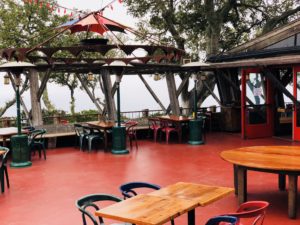
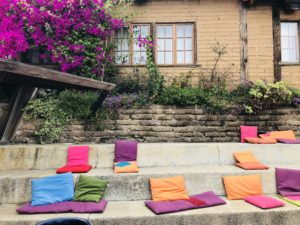 Nepenthe became a place for creative expression and bohemian culture for people who enjoyed living freely and had disdain for traditional societal propriety. According to “Nepenthe Big Sur Stories and Folktales” (see Nepenthe Stories), visitors arrived from all over the world; “vagabonds, poets, artists, lovers… when there were fewer people on the coast, when nights were longer and days lonelier, Nepenthe was a place to gather”. Famous visitors included Henry Miller, Anais Nin, Man Ray, Ernest Hemingway, Joan Baez, Kim Novak, Steve McQueen, Richard Burton and Elizabeth Taylor. The latter two performed scenes for the 1965 film, “The Sandpiper”, at Nepenthe. Even today, Nepenthe continues to invoke the spirit of the previous beatnik and hippie cultures.
Nepenthe became a place for creative expression and bohemian culture for people who enjoyed living freely and had disdain for traditional societal propriety. According to “Nepenthe Big Sur Stories and Folktales” (see Nepenthe Stories), visitors arrived from all over the world; “vagabonds, poets, artists, lovers… when there were fewer people on the coast, when nights were longer and days lonelier, Nepenthe was a place to gather”. Famous visitors included Henry Miller, Anais Nin, Man Ray, Ernest Hemingway, Joan Baez, Kim Novak, Steve McQueen, Richard Burton and Elizabeth Taylor. The latter two performed scenes for the 1965 film, “The Sandpiper”, at Nepenthe. Even today, Nepenthe continues to invoke the spirit of the previous beatnik and hippie cultures.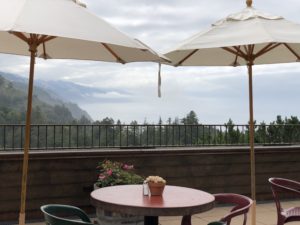
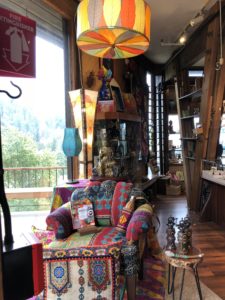 The Phoenix Shop opened in the 1960s, featuring gifts and local artwork, pottery, books, candles, clothing, hand-knitted hats, and jewelry. Café Kevah opened in 1992 above the gift shop and offers a great place to grab brunch.
The Phoenix Shop opened in the 1960s, featuring gifts and local artwork, pottery, books, candles, clothing, hand-knitted hats, and jewelry. Café Kevah opened in 1992 above the gift shop and offers a great place to grab brunch.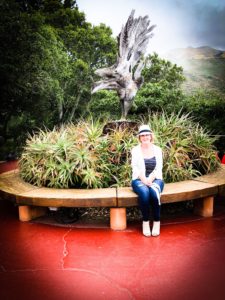 When you first enter the Nepenthe terrace, you see a five-foot-tall rising phoenix with bronze feet, the symbol for Nepenthe. This was created from a huge live oak originally growing here. When it died, sculptor Edmund Kara transformed the tree’s trunk into this amazing sculpture.
When you first enter the Nepenthe terrace, you see a five-foot-tall rising phoenix with bronze feet, the symbol for Nepenthe. This was created from a huge live oak originally growing here. When it died, sculptor Edmund Kara transformed the tree’s trunk into this amazing sculpture.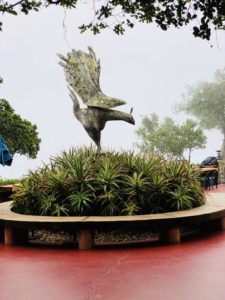
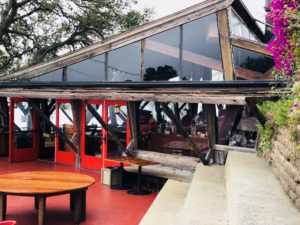 If you visit Big Sur and want to check out Nepenthe, one caveat is that they are crazy busy on the weekends. It is not unusual to find the parking lot full and cars parked for a half mile down Hwy 1! If you are able to get seating, I recommend the outdoor counter overlooking the beautiful view (except on foggy days such as in this photo!).
If you visit Big Sur and want to check out Nepenthe, one caveat is that they are crazy busy on the weekends. It is not unusual to find the parking lot full and cars parked for a half mile down Hwy 1! If you are able to get seating, I recommend the outdoor counter overlooking the beautiful view (except on foggy days such as in this photo!).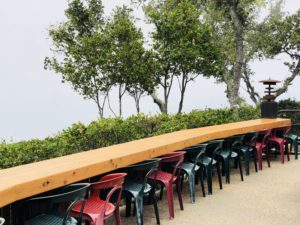 Hours are as follows:Nepenthe – open daily 11:30am -10:00pmCafé Kevah – open daily 9:00 am-4: 00 pm (weather permitting)Phoenix Shop – open Daily from 10:30am-7:00pmNote that they do not take reservations unless it is for a large group.
Hours are as follows:Nepenthe – open daily 11:30am -10:00pmCafé Kevah – open daily 9:00 am-4: 00 pm (weather permitting)Phoenix Shop – open Daily from 10:30am-7:00pmNote that they do not take reservations unless it is for a large group.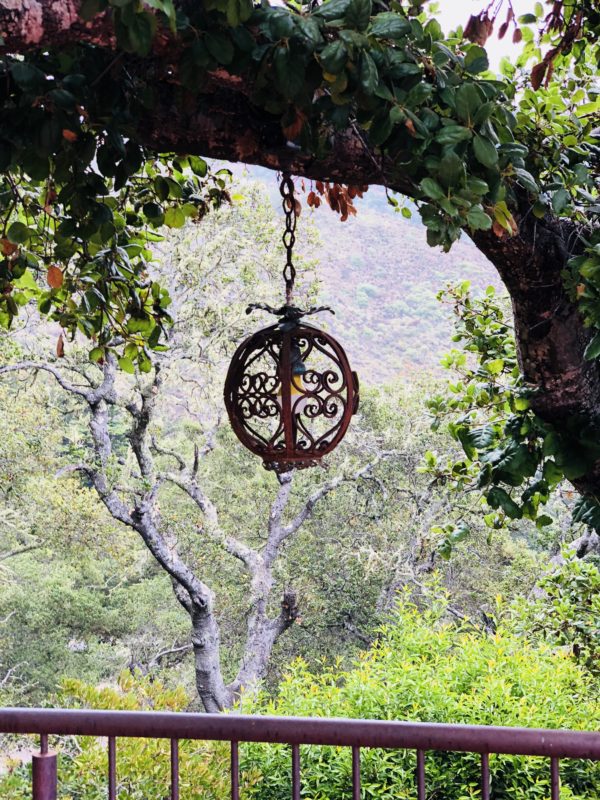 Nepenthe is located on Hwy 1, about 30 miles south of Carmel, near the Ventana Inn and Post Ranch Inn. You will see the Nepenthe sign on the west side of the highway. Make sure to check road conditions before you go, it is easy to do. Go to the CalTrans website here caltrans.ca.gov and enter 1 (the highway number) then search. Or you may phone 800-427-7623. Wishing you beautiful vistas, peace, love & happiness!
Nepenthe is located on Hwy 1, about 30 miles south of Carmel, near the Ventana Inn and Post Ranch Inn. You will see the Nepenthe sign on the west side of the highway. Make sure to check road conditions before you go, it is easy to do. Go to the CalTrans website here caltrans.ca.gov and enter 1 (the highway number) then search. Or you may phone 800-427-7623. Wishing you beautiful vistas, peace, love & happiness!